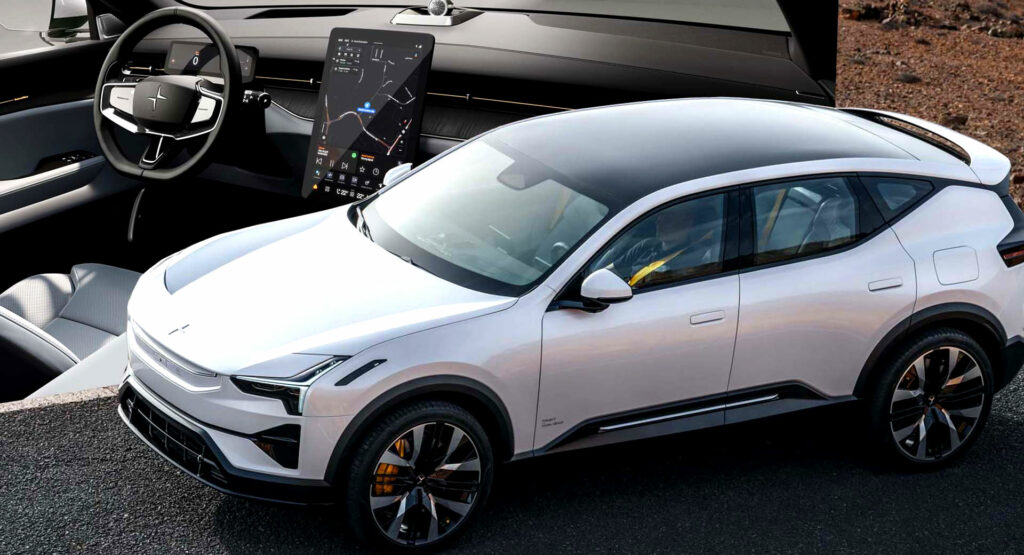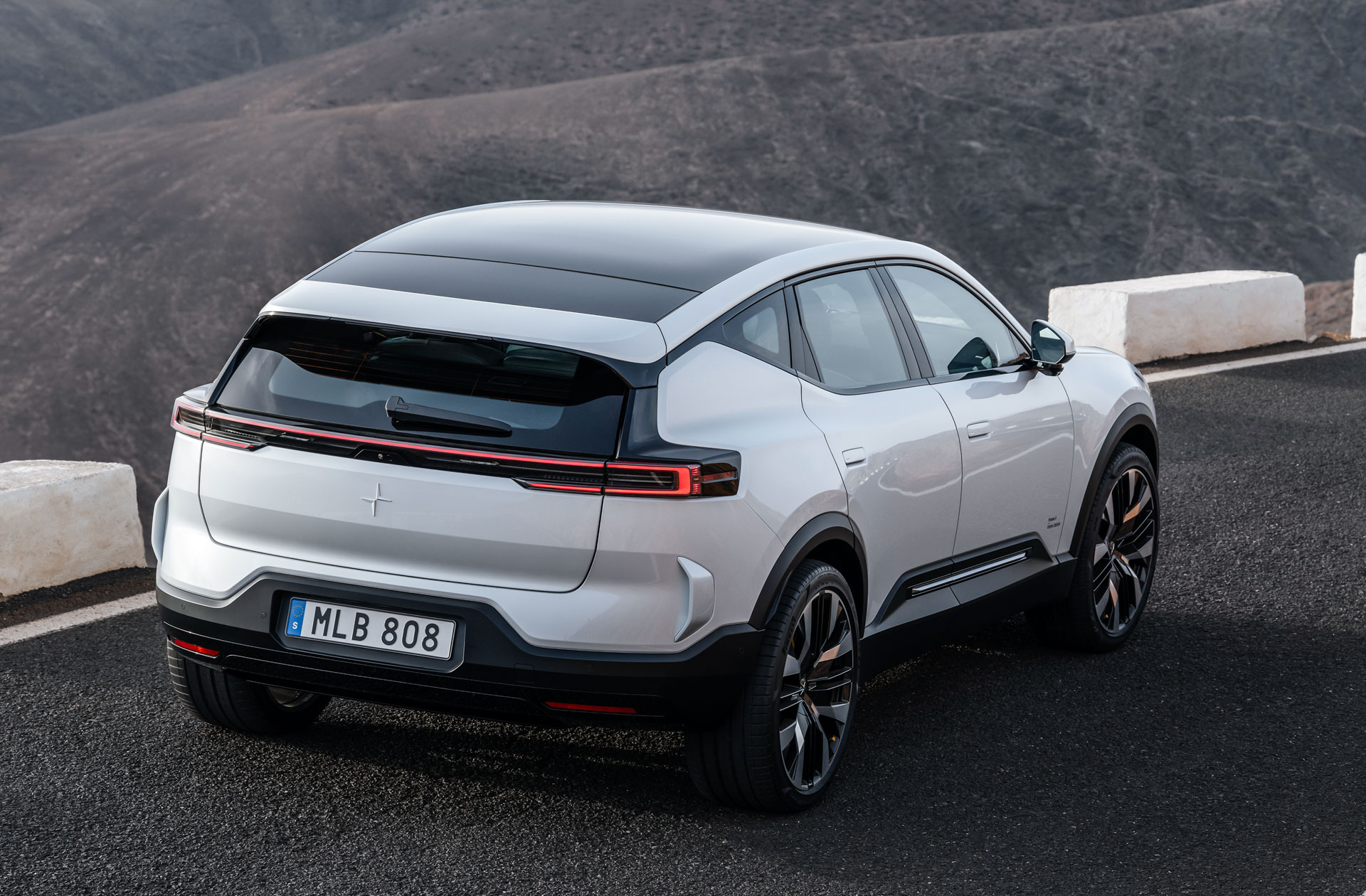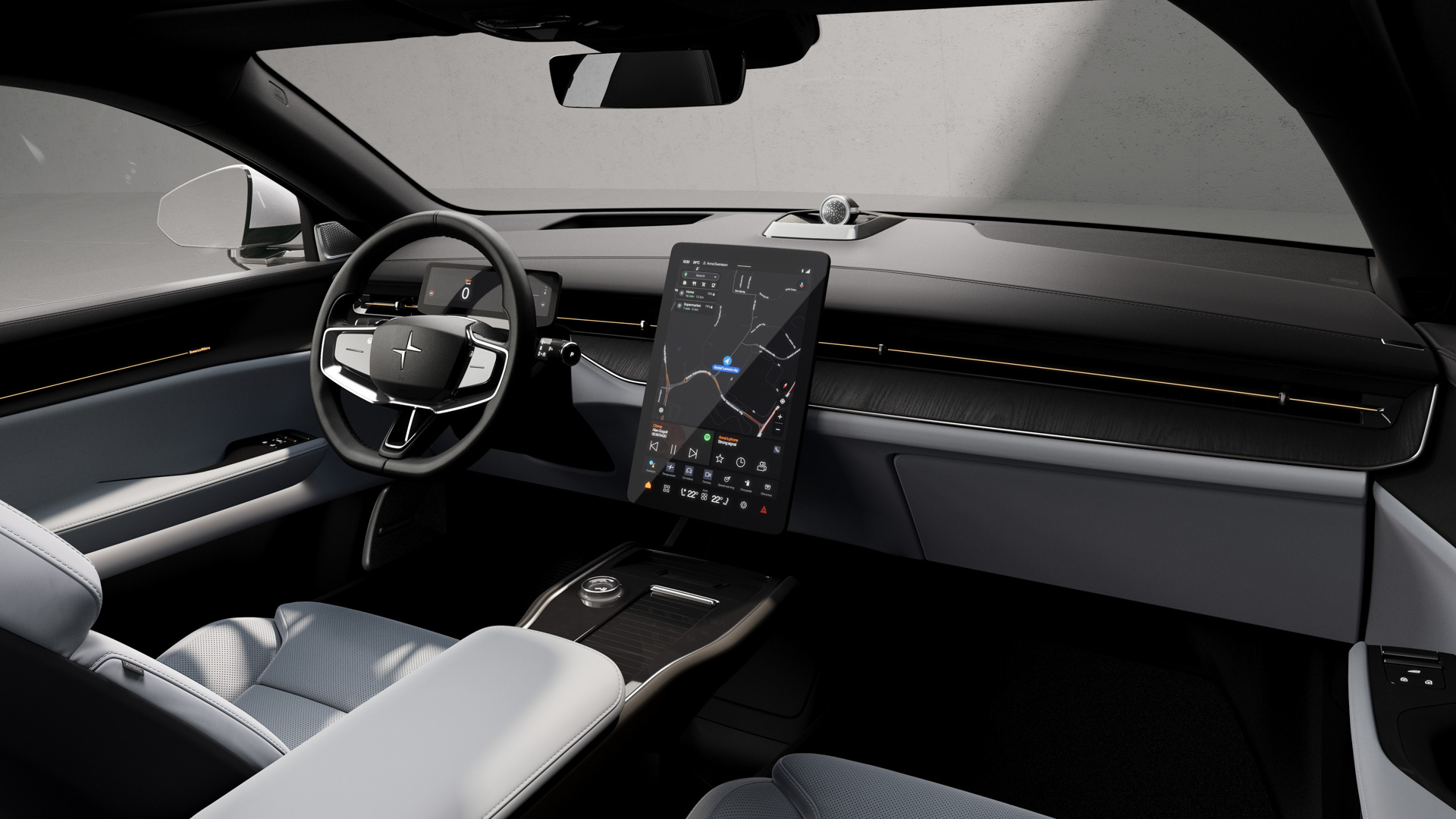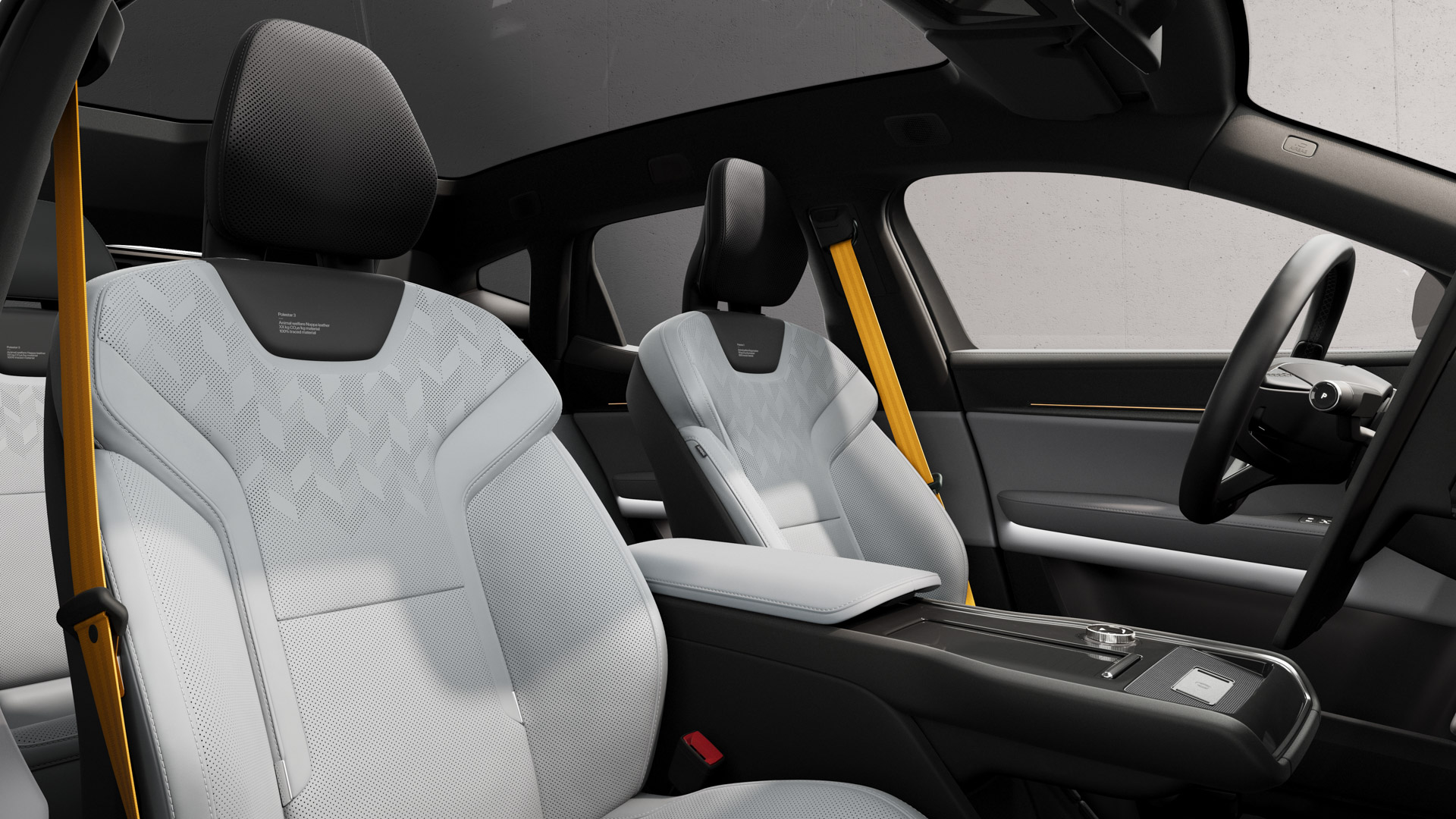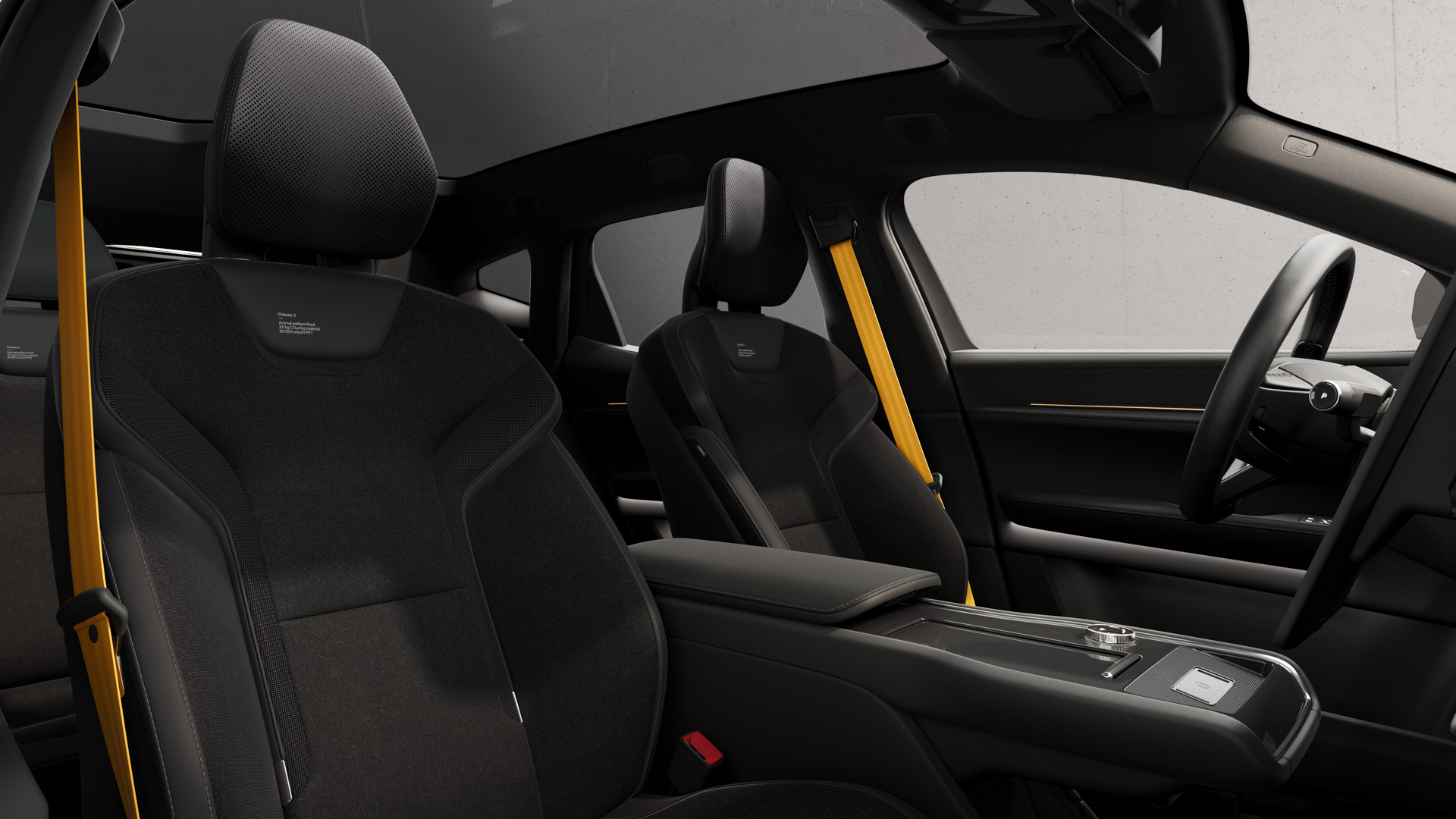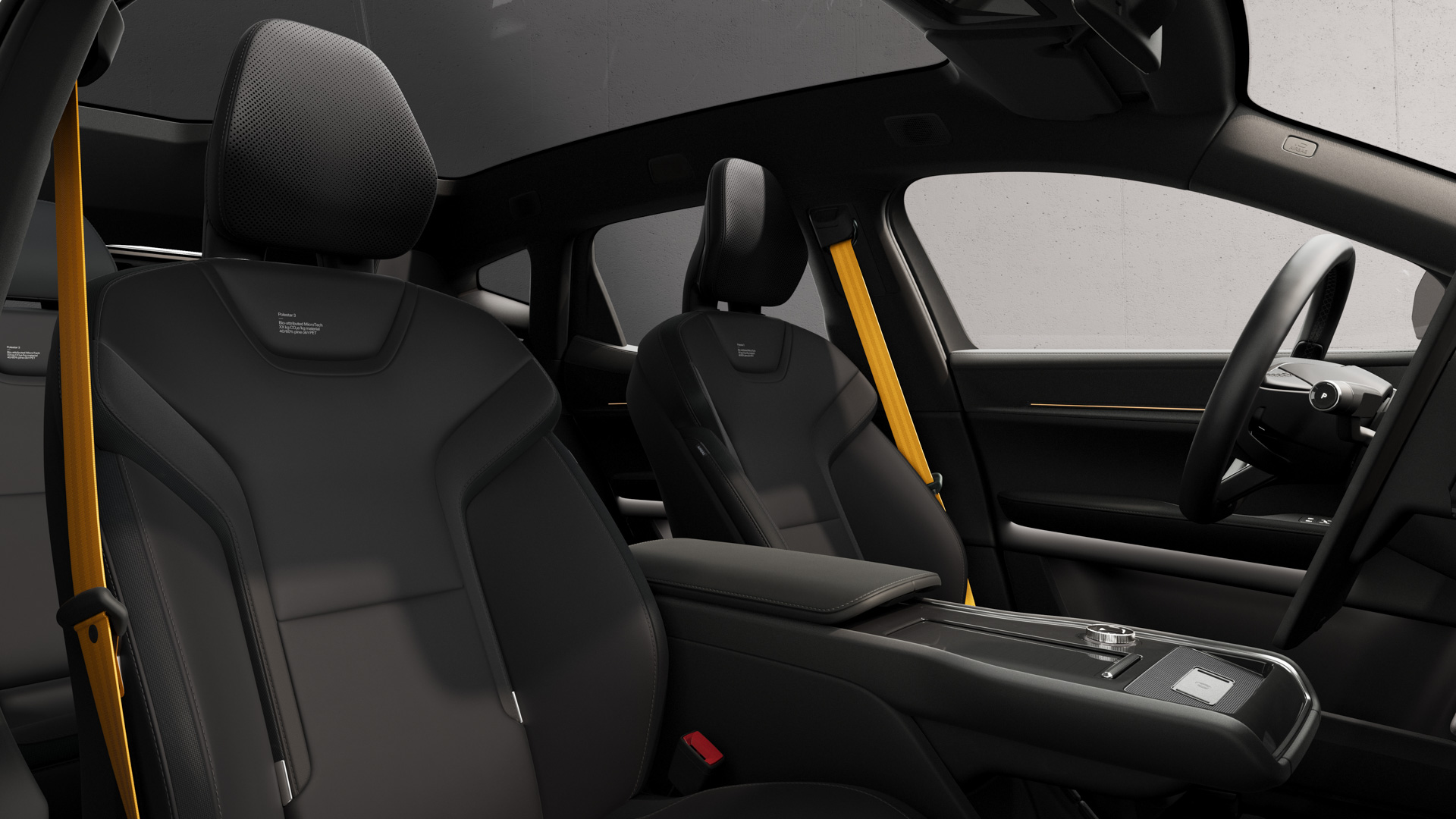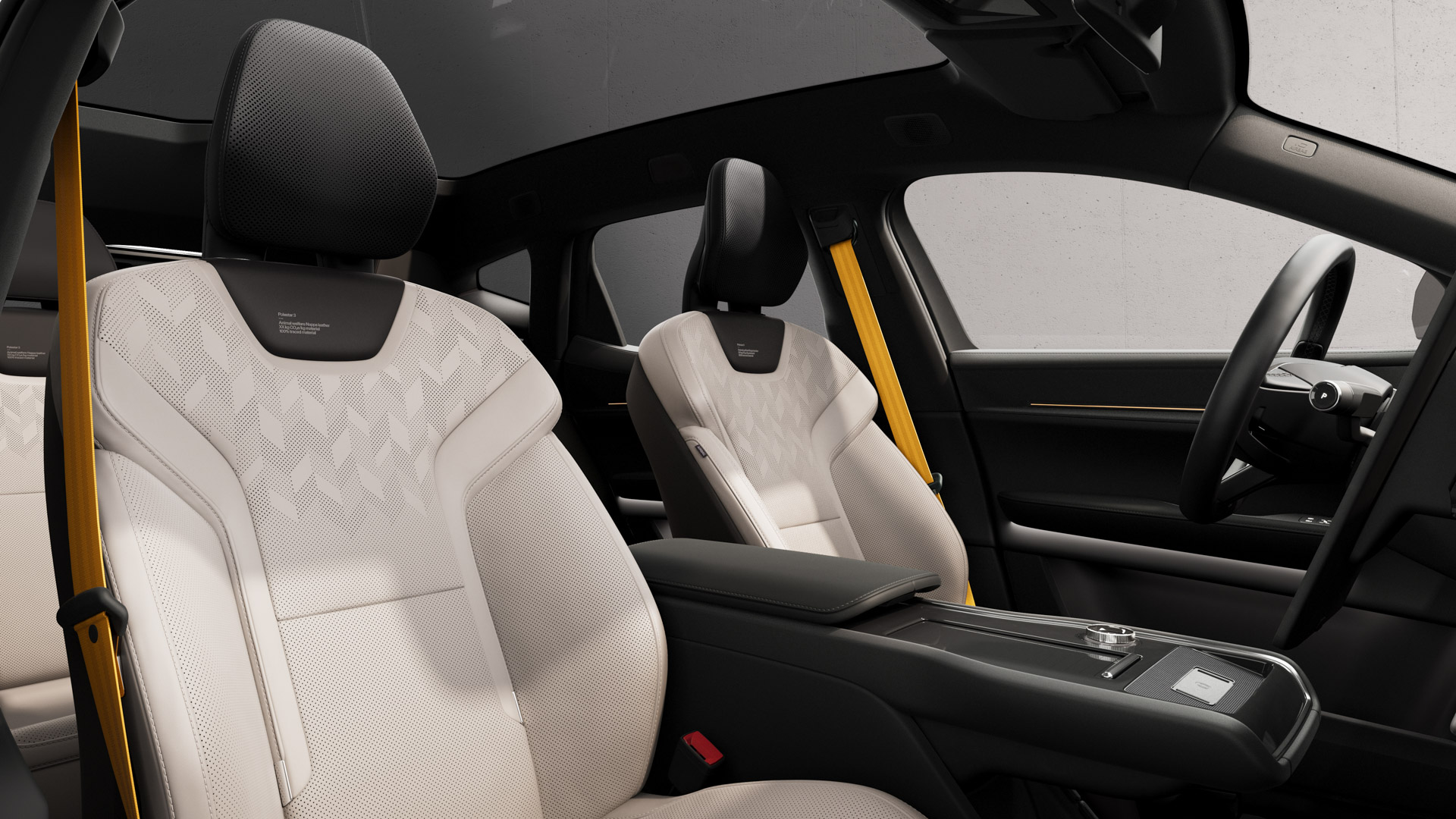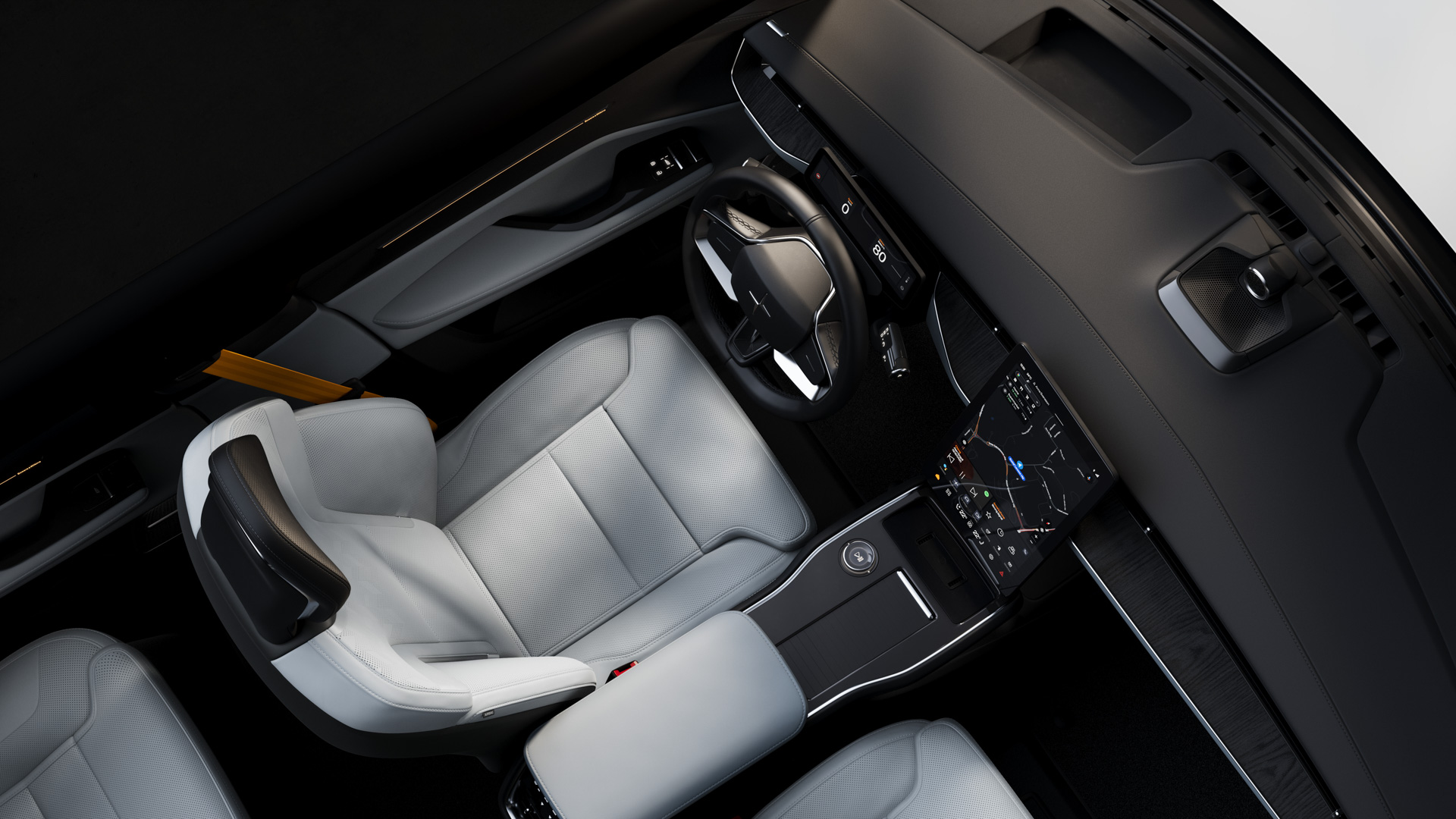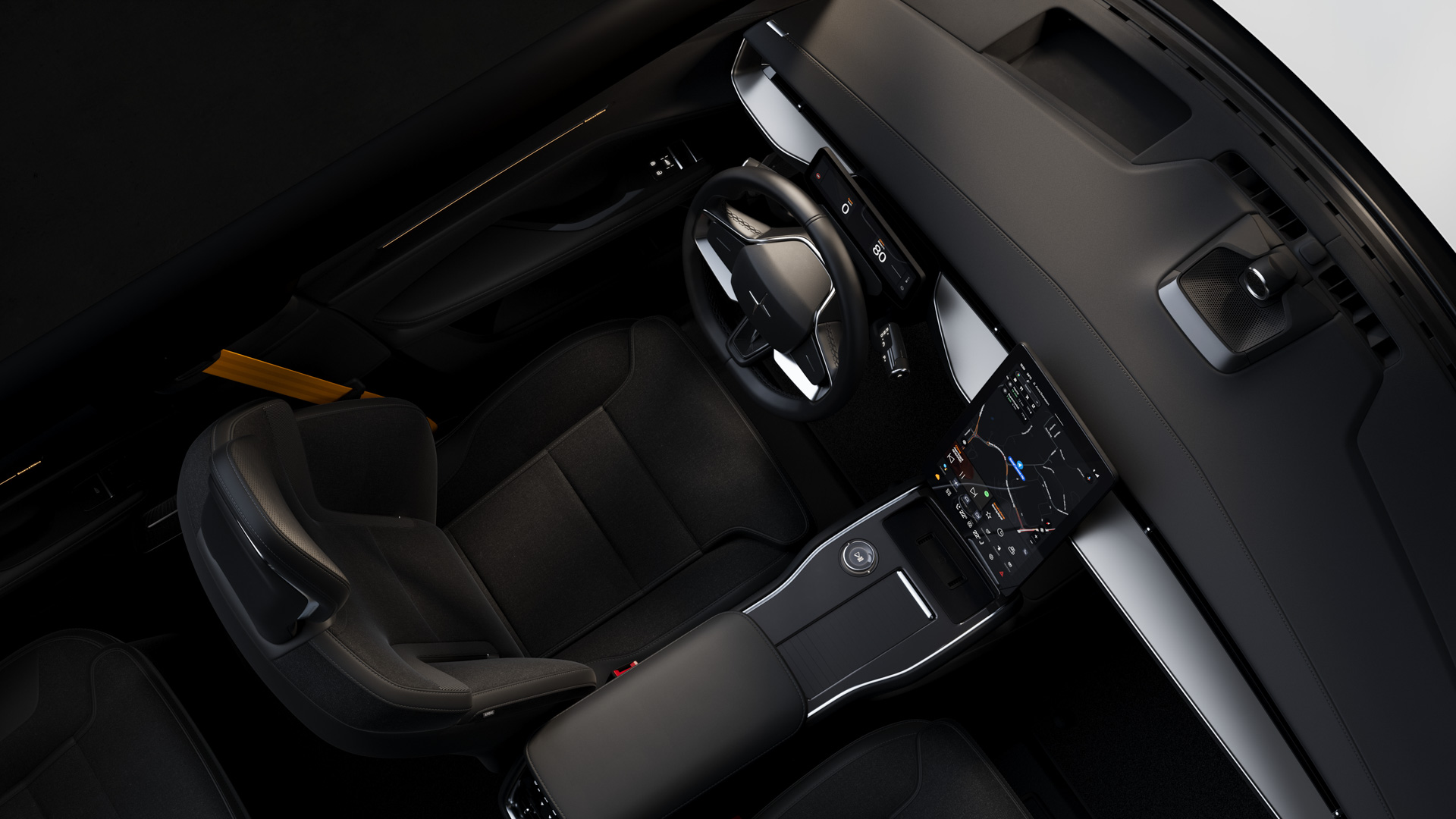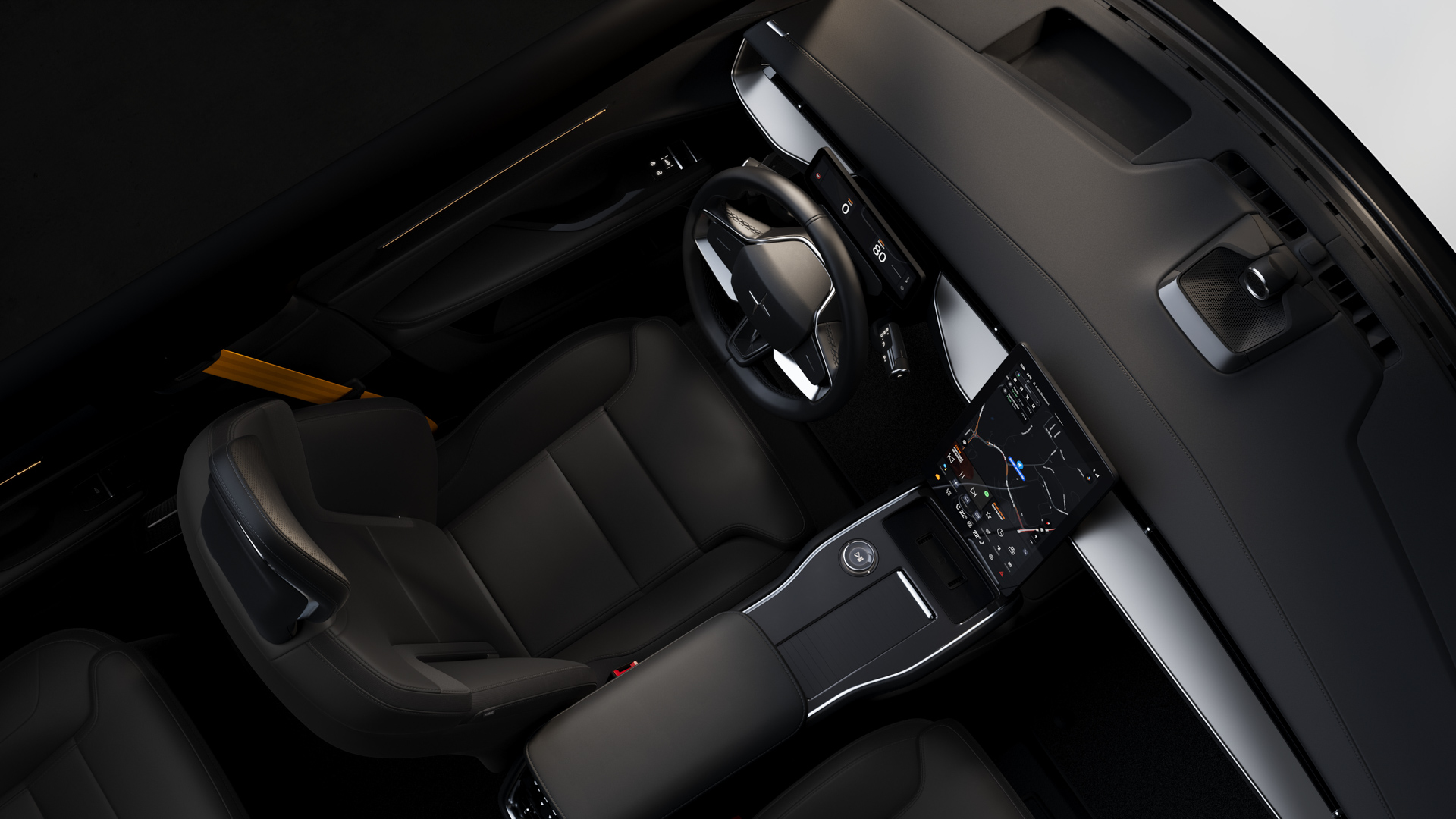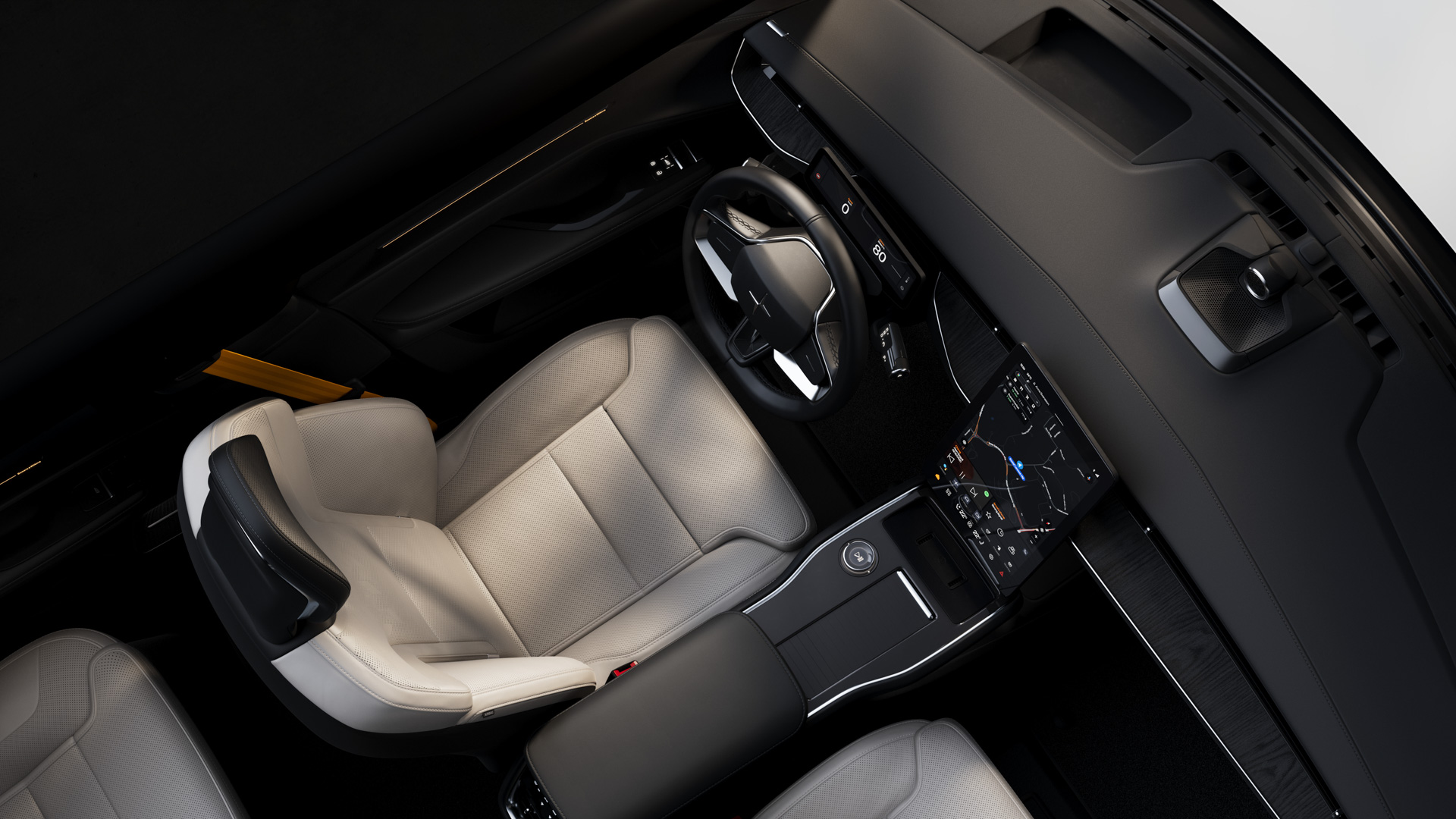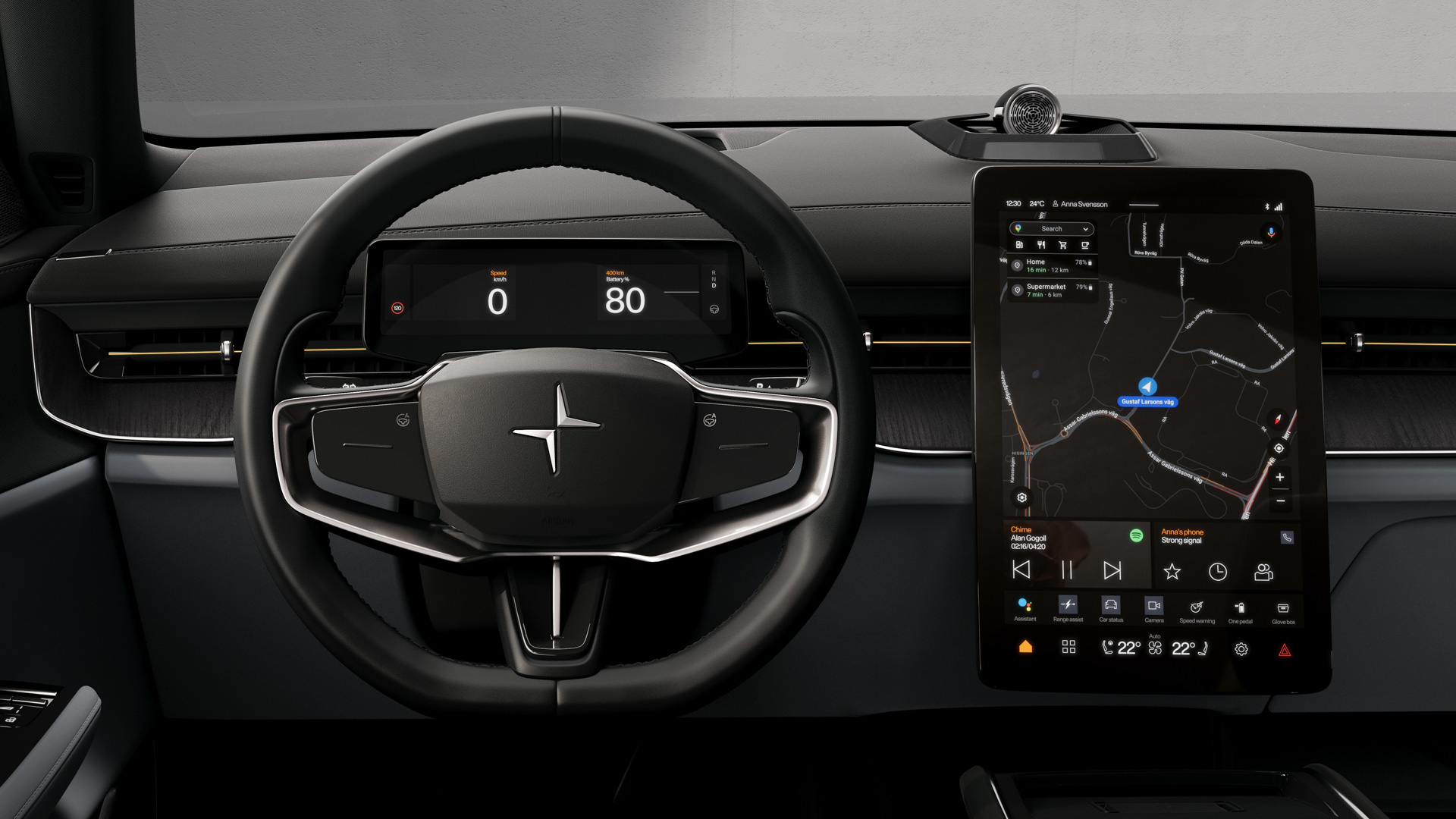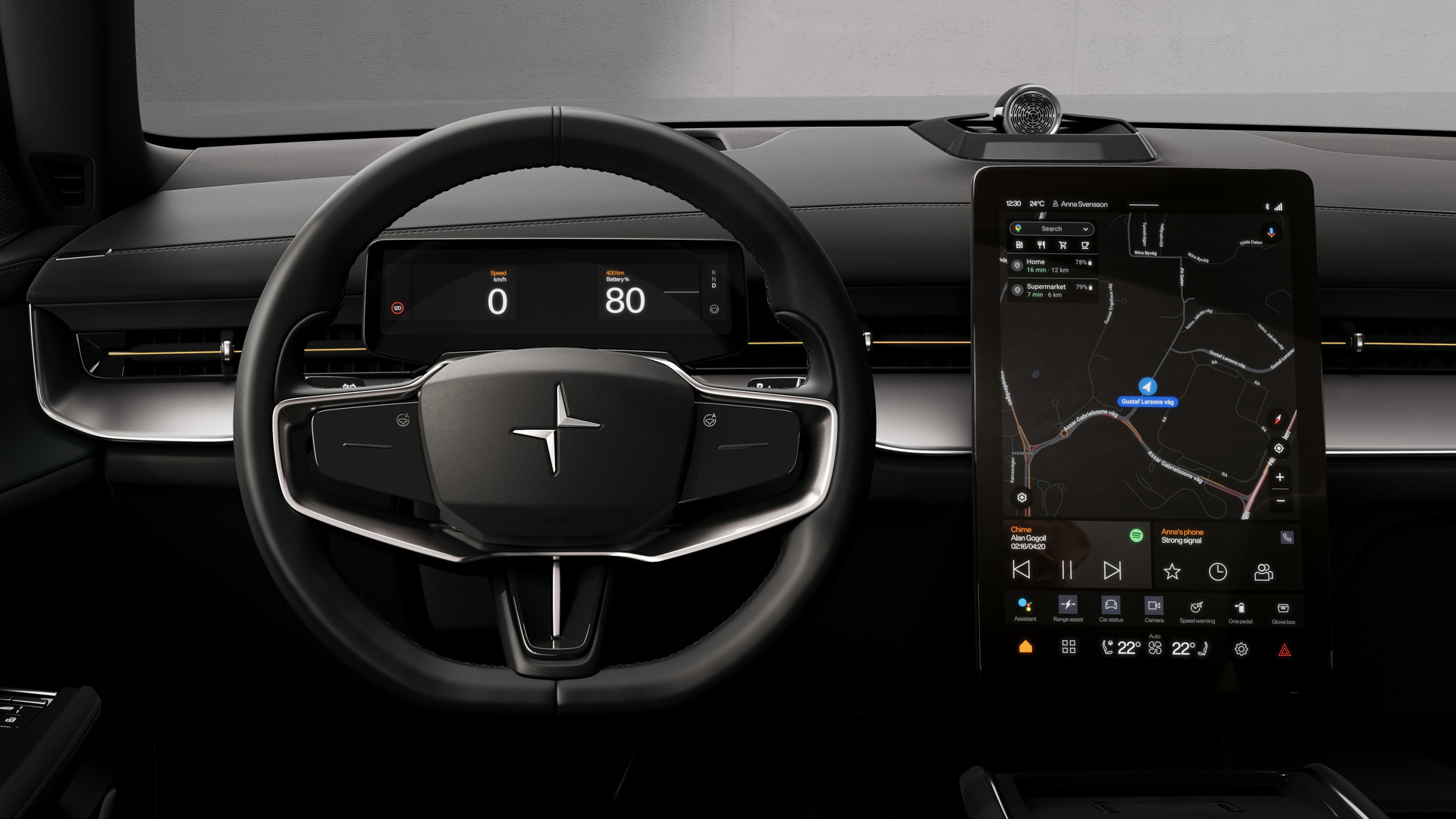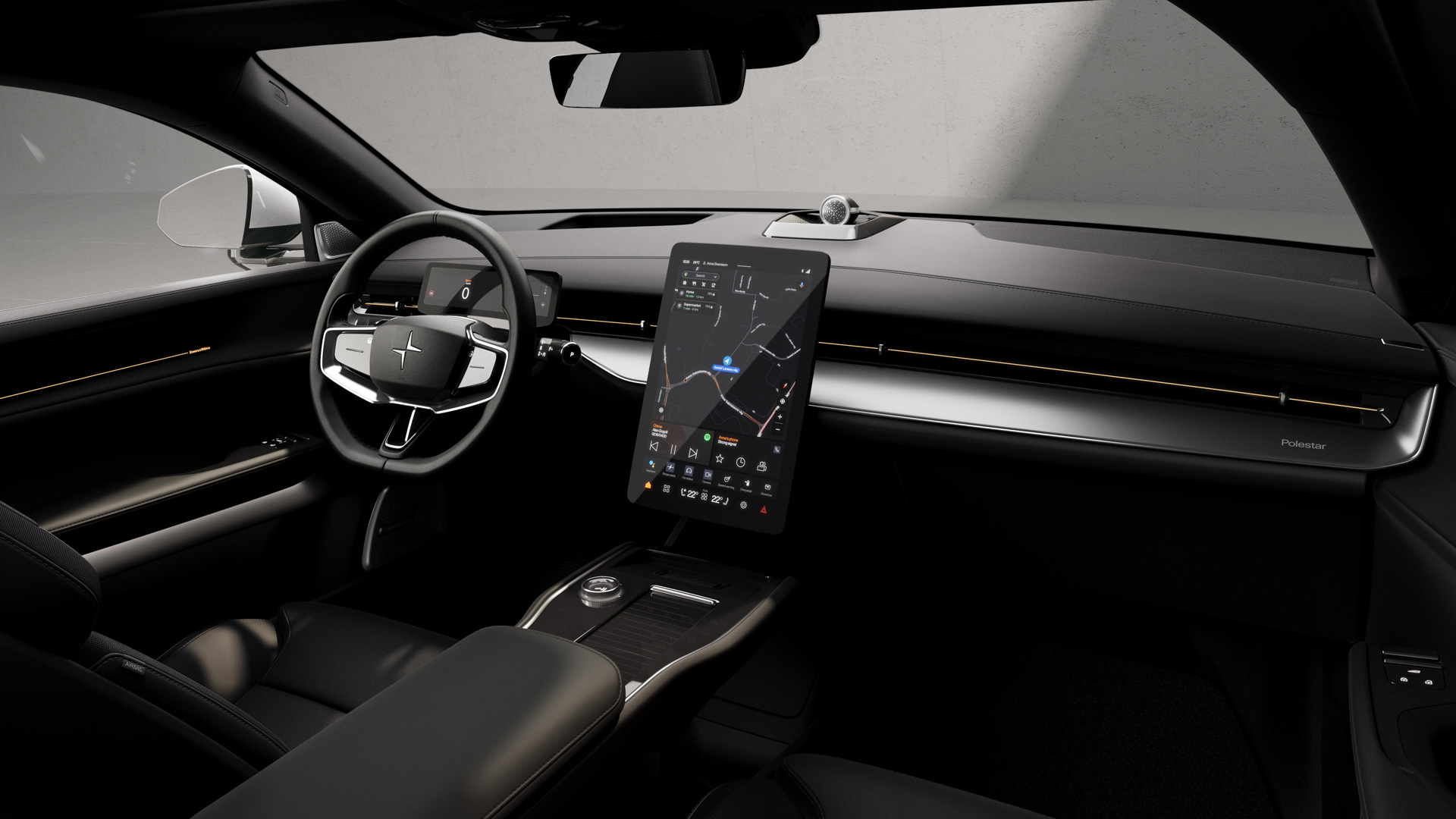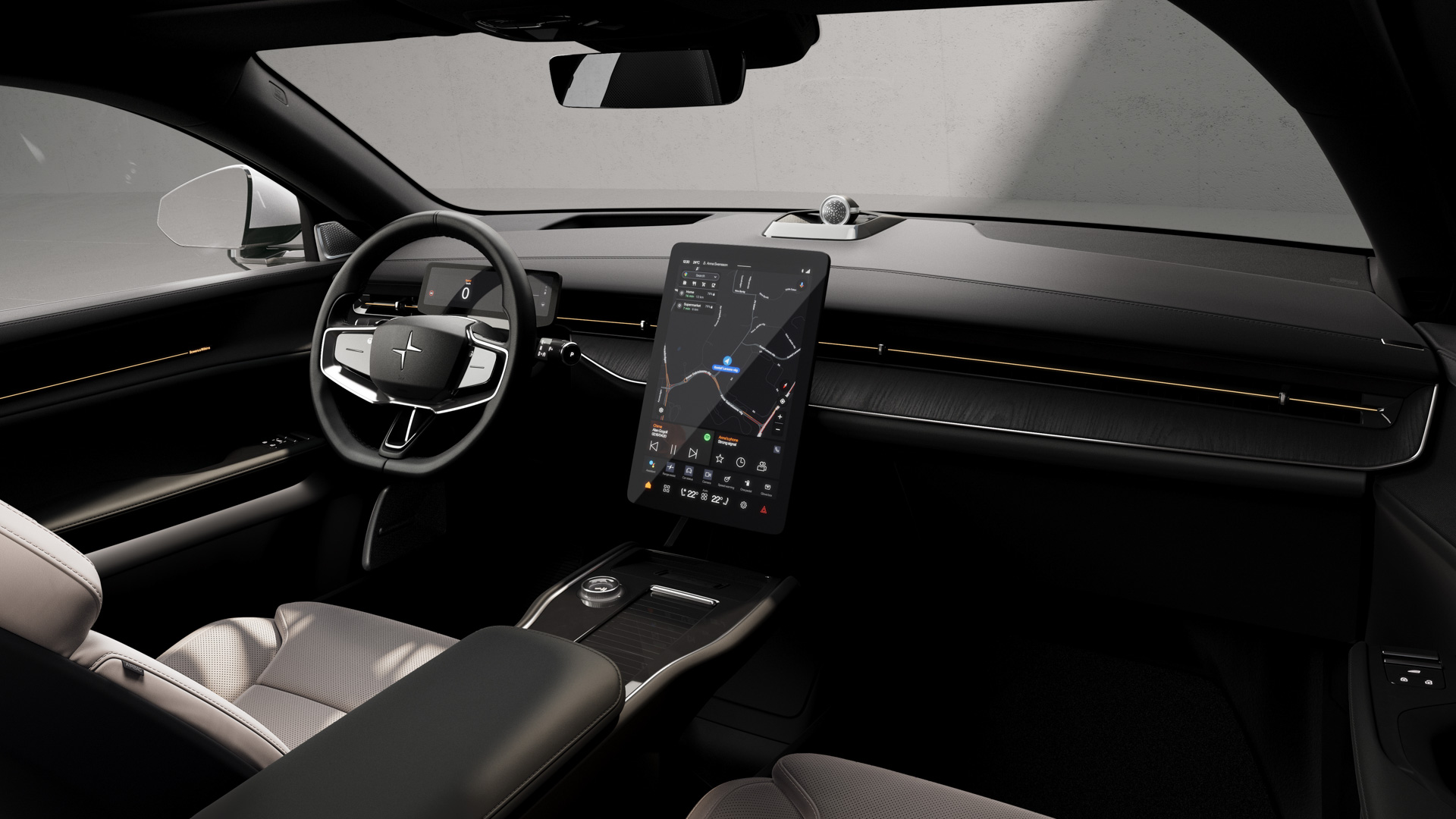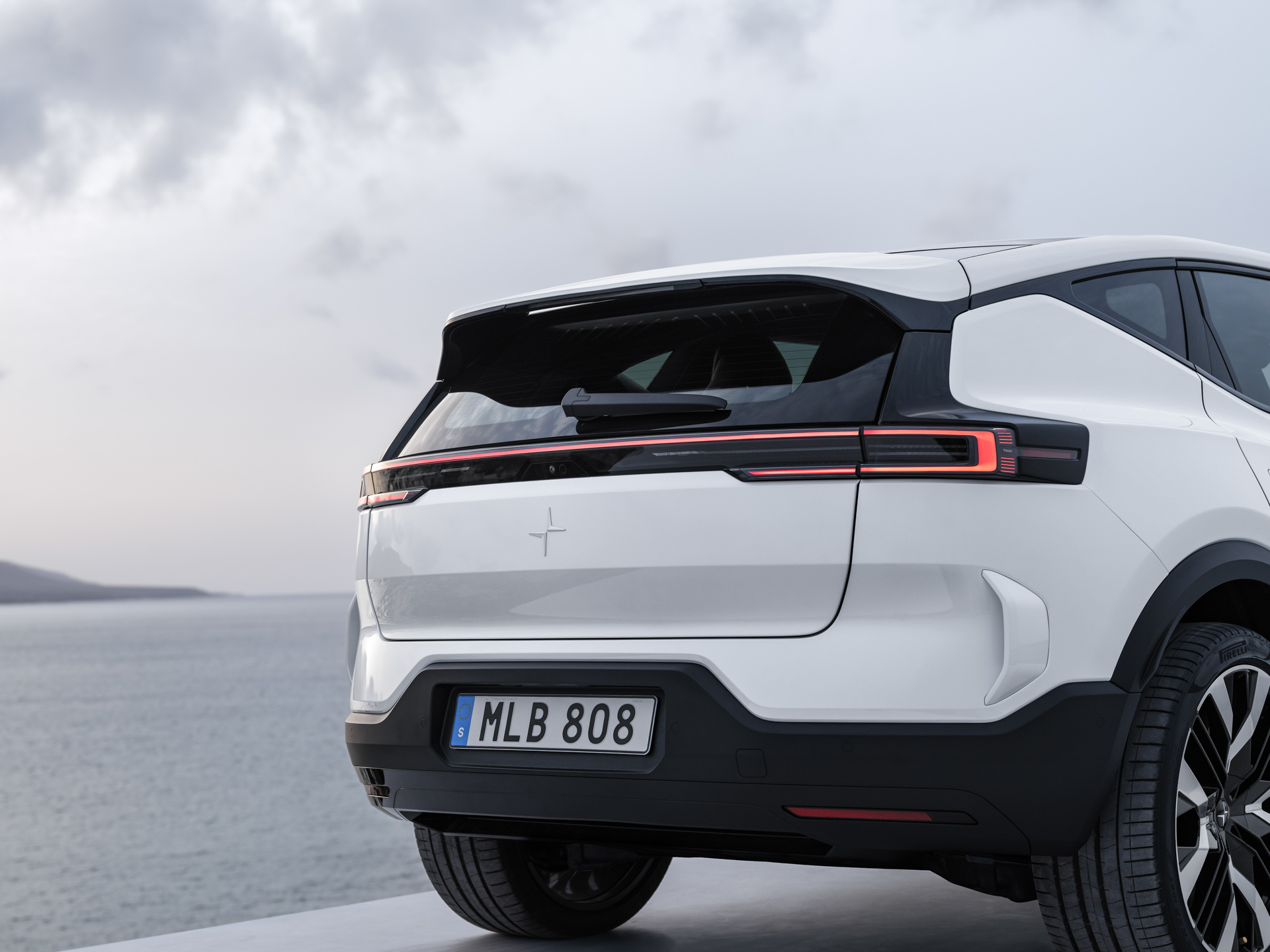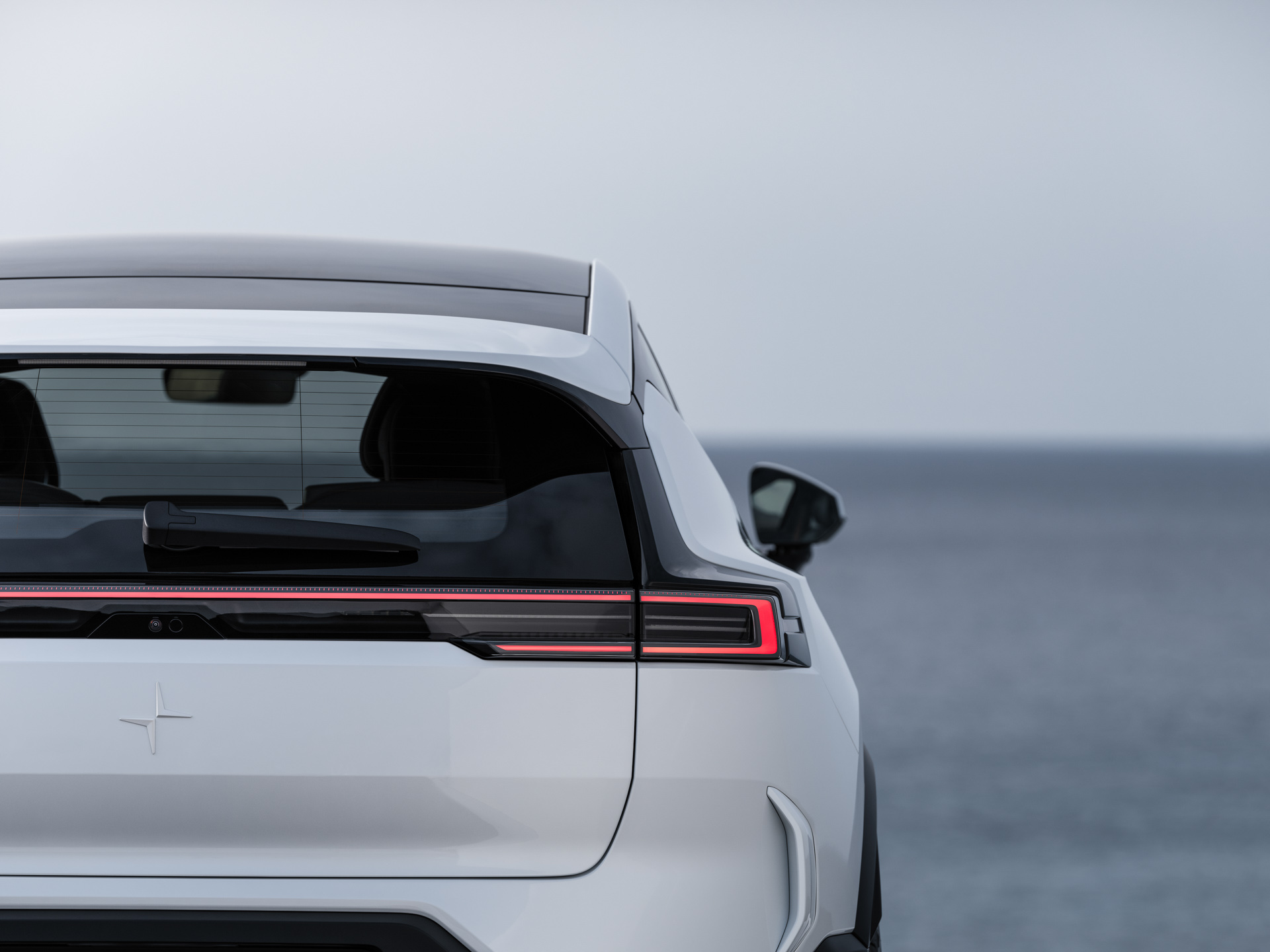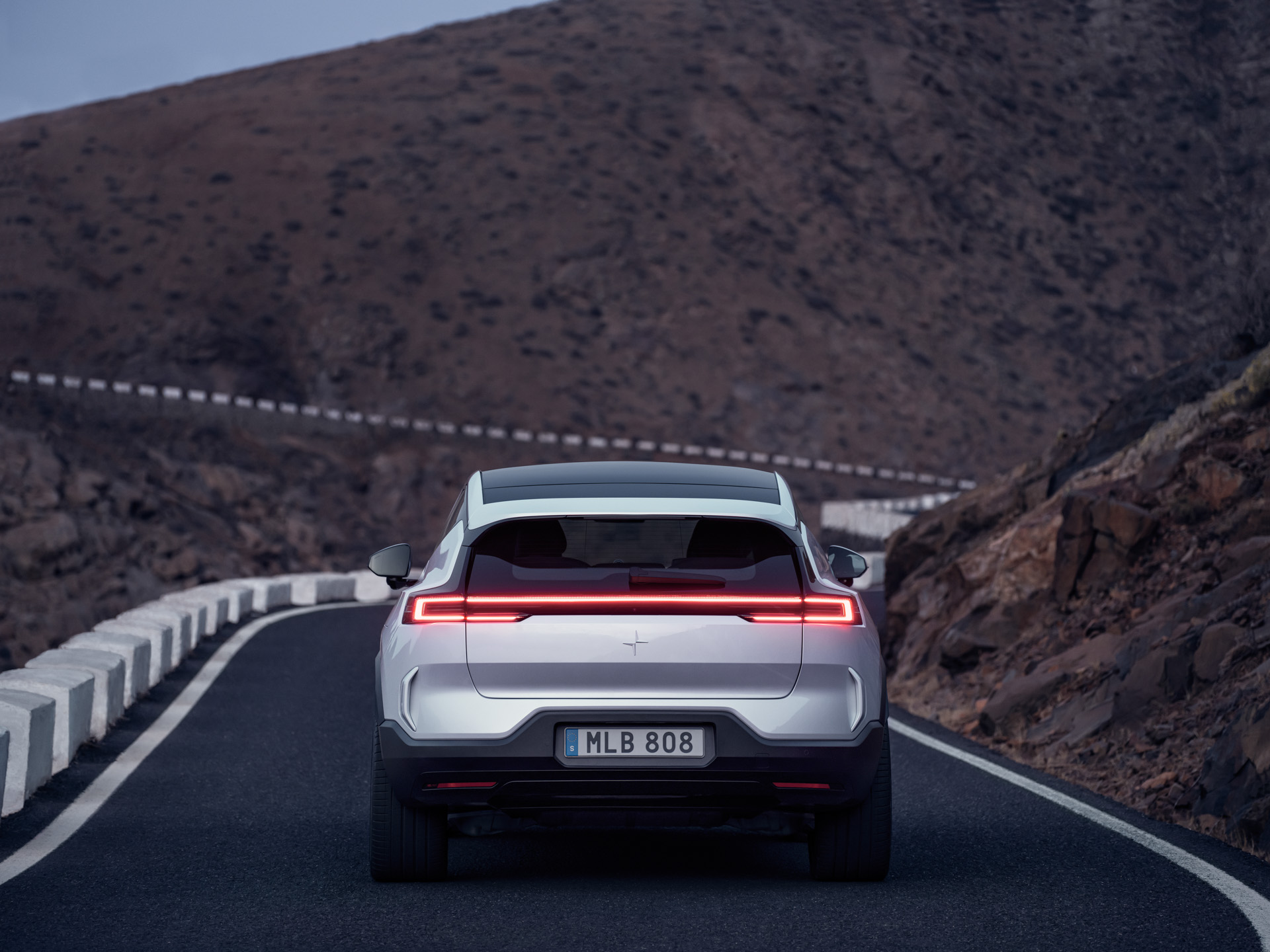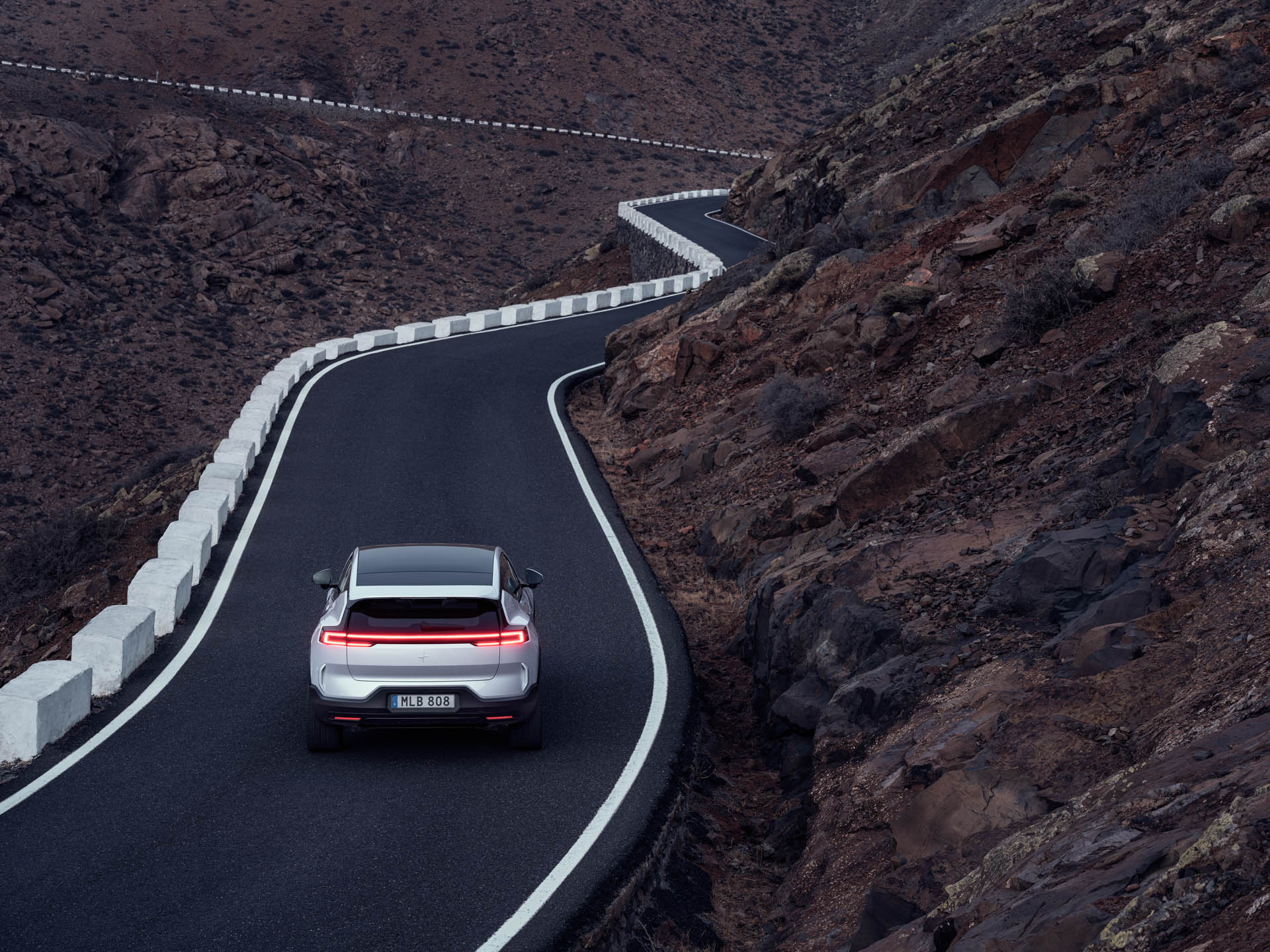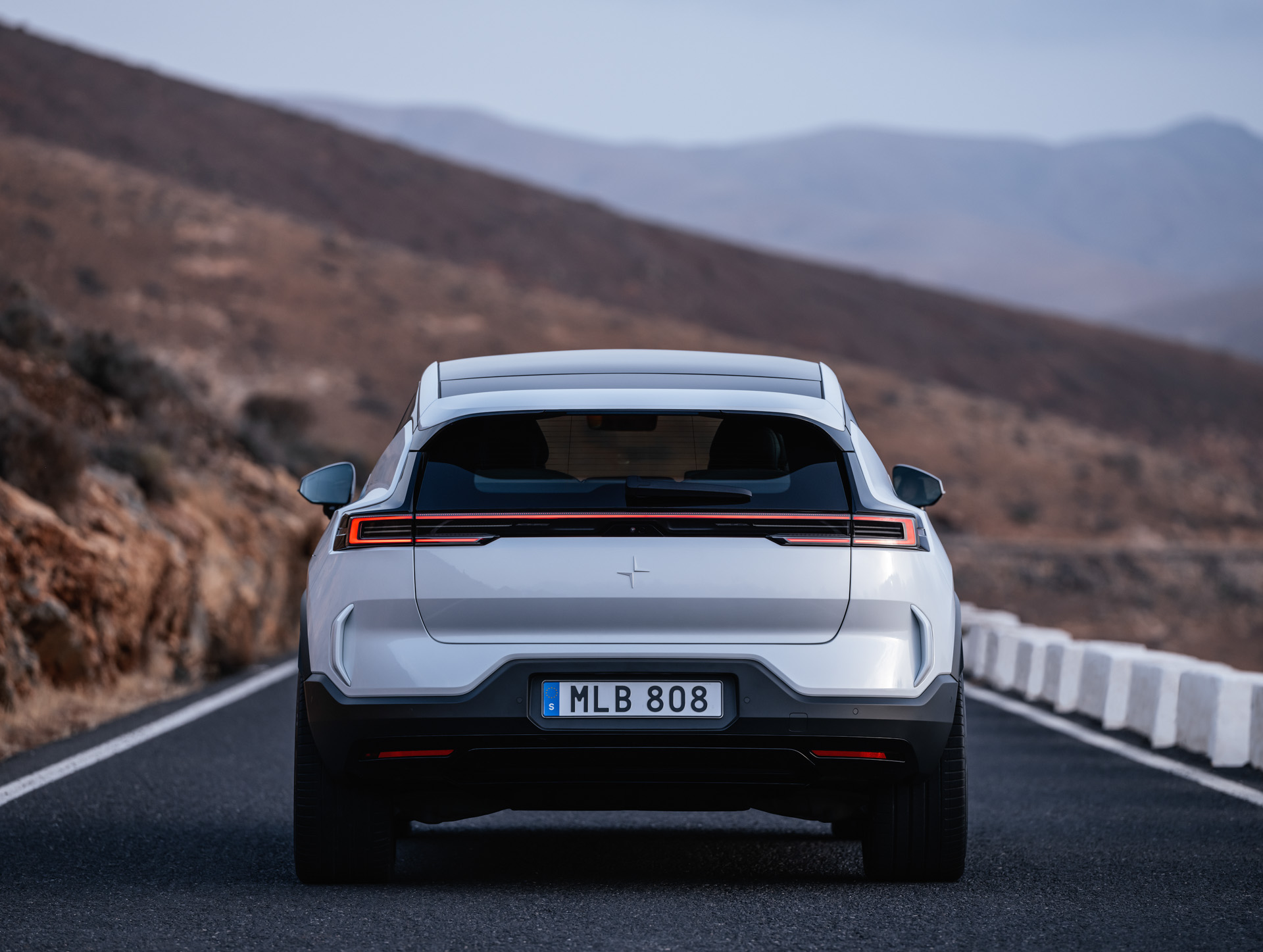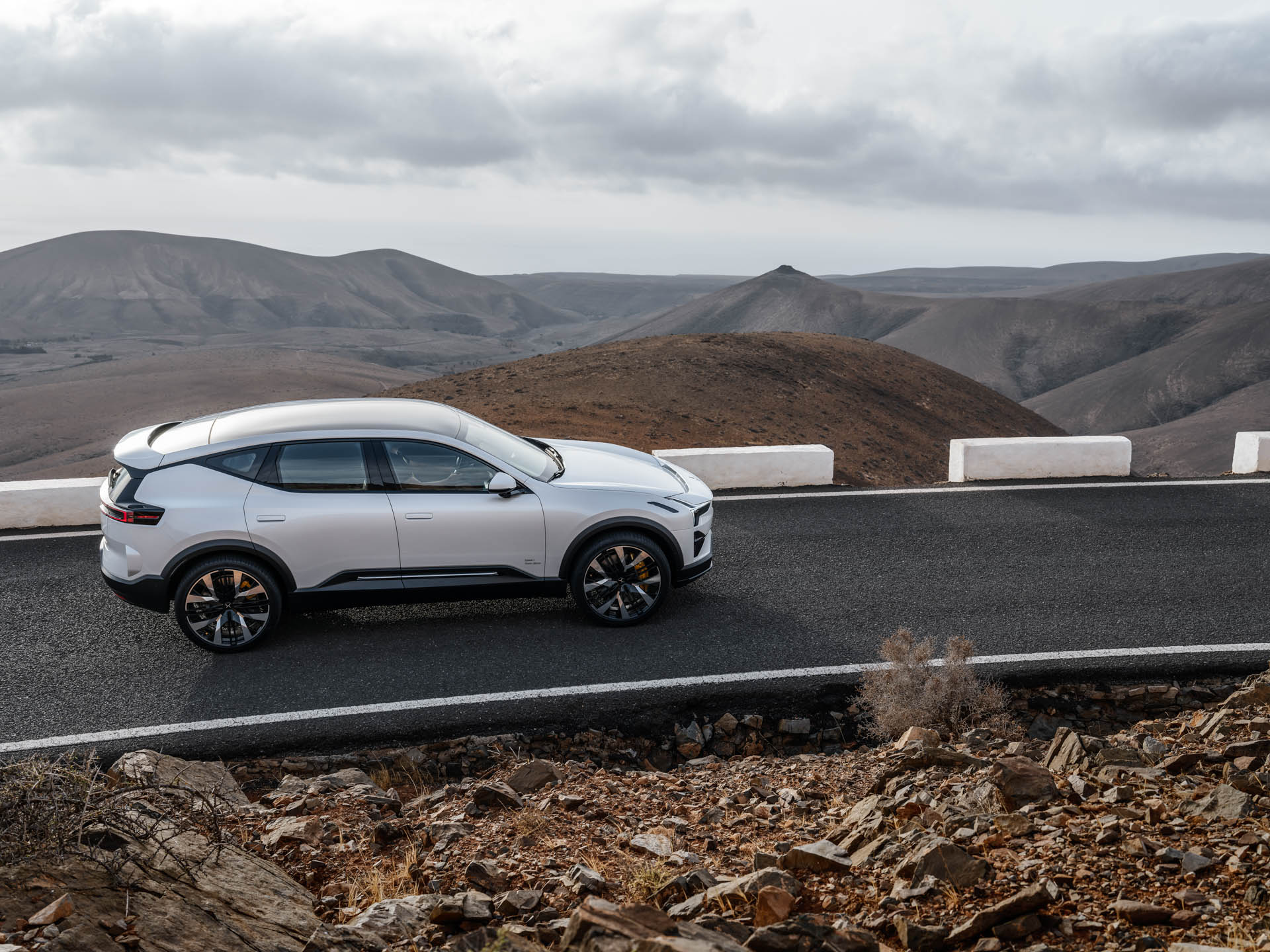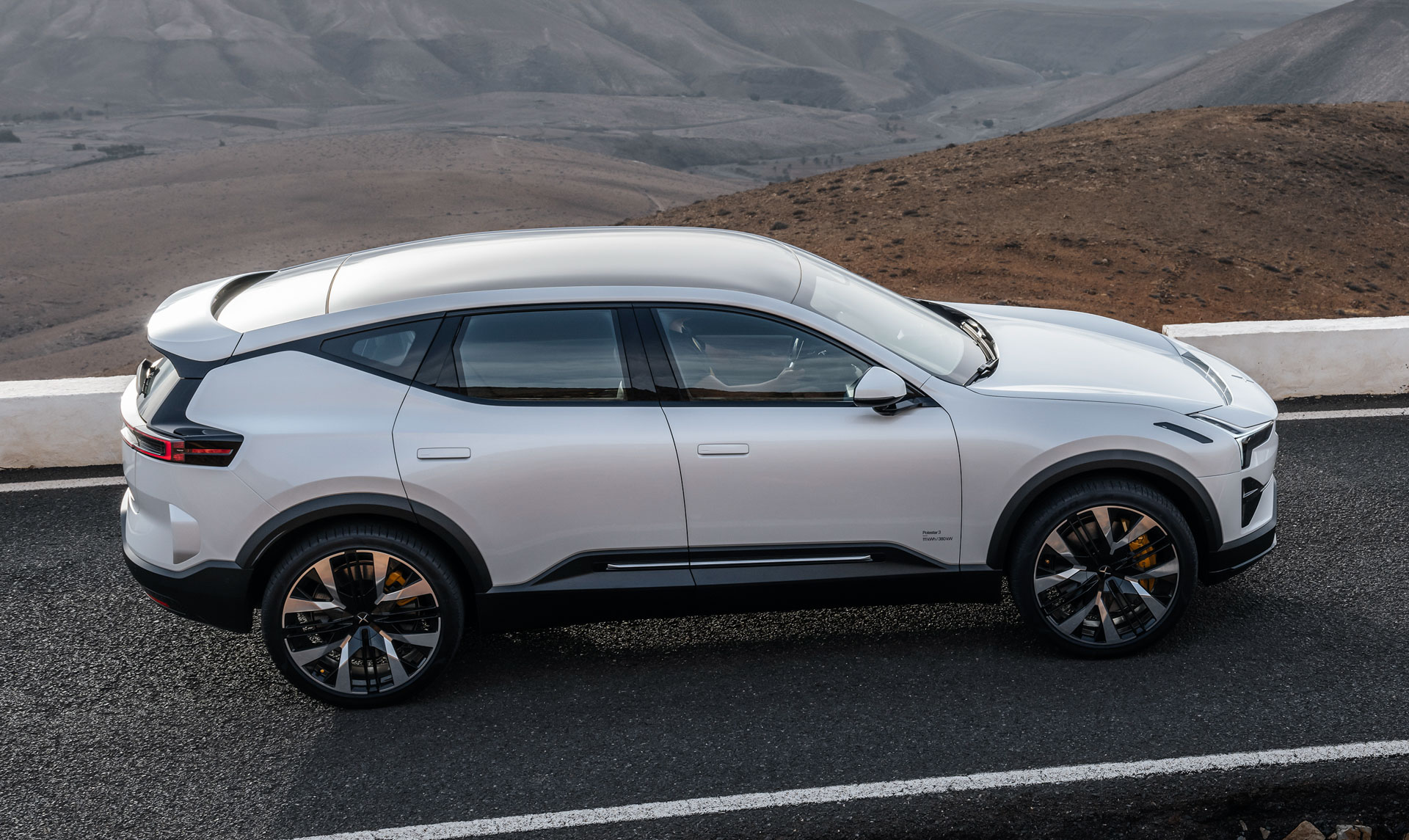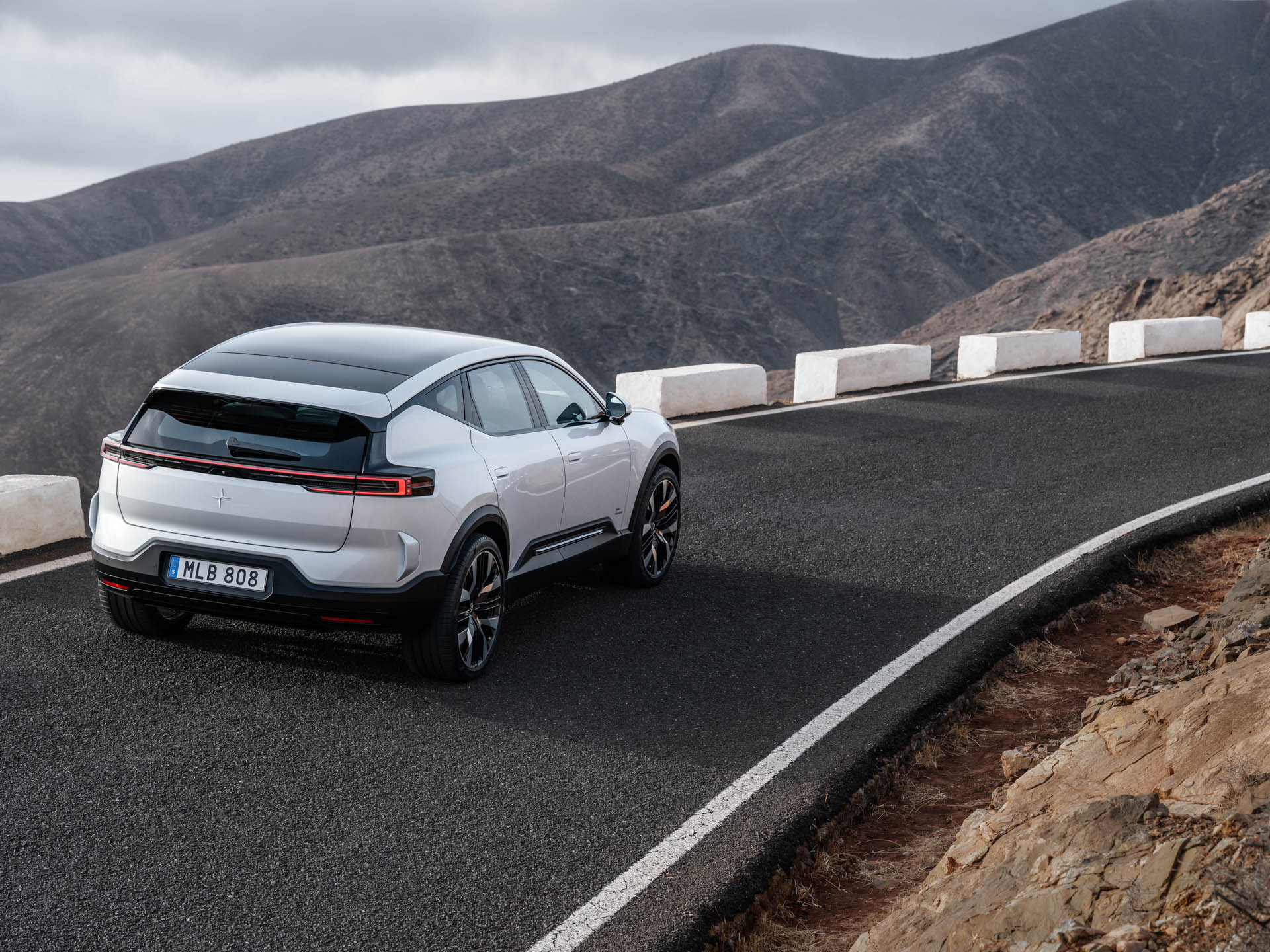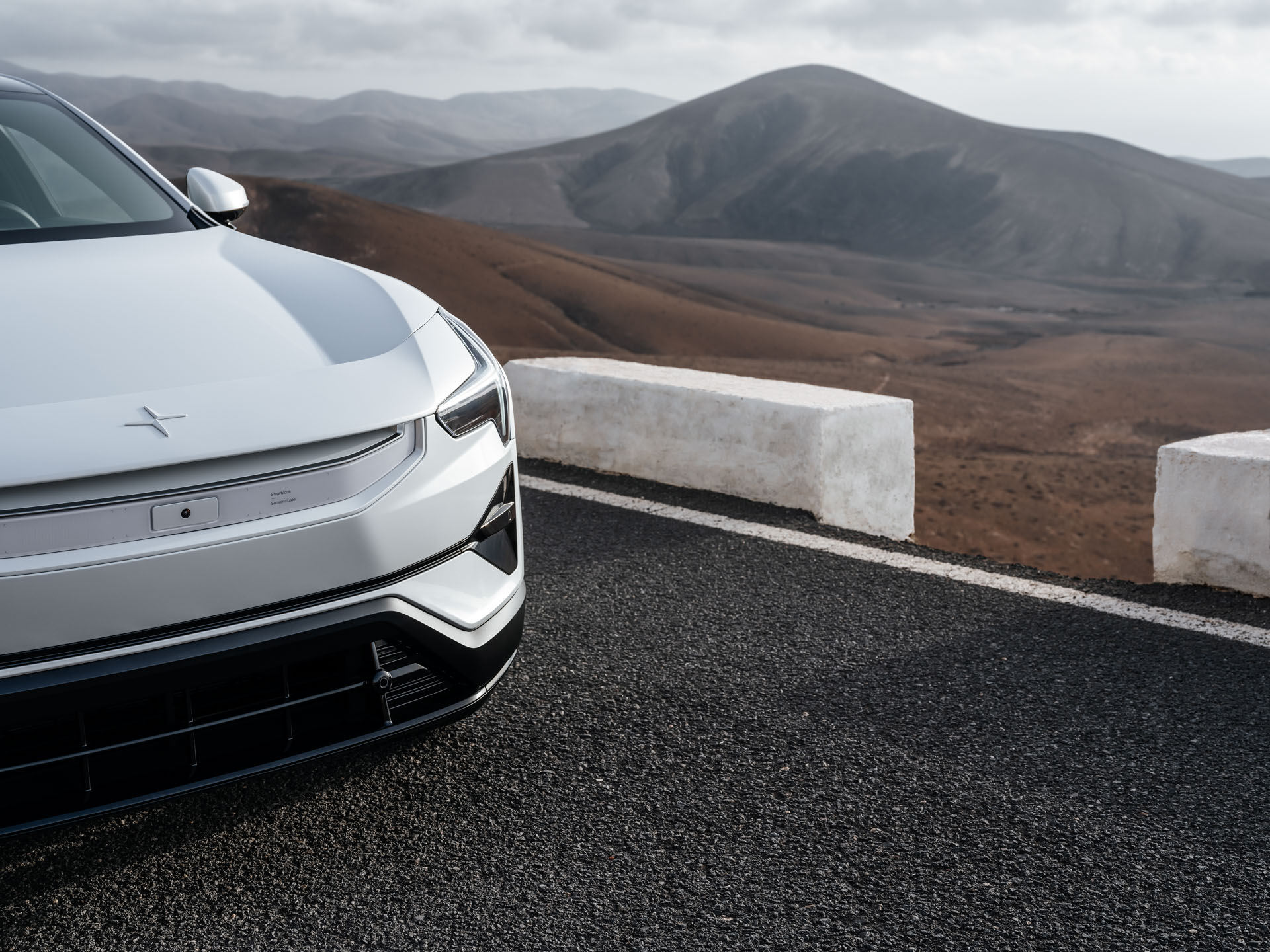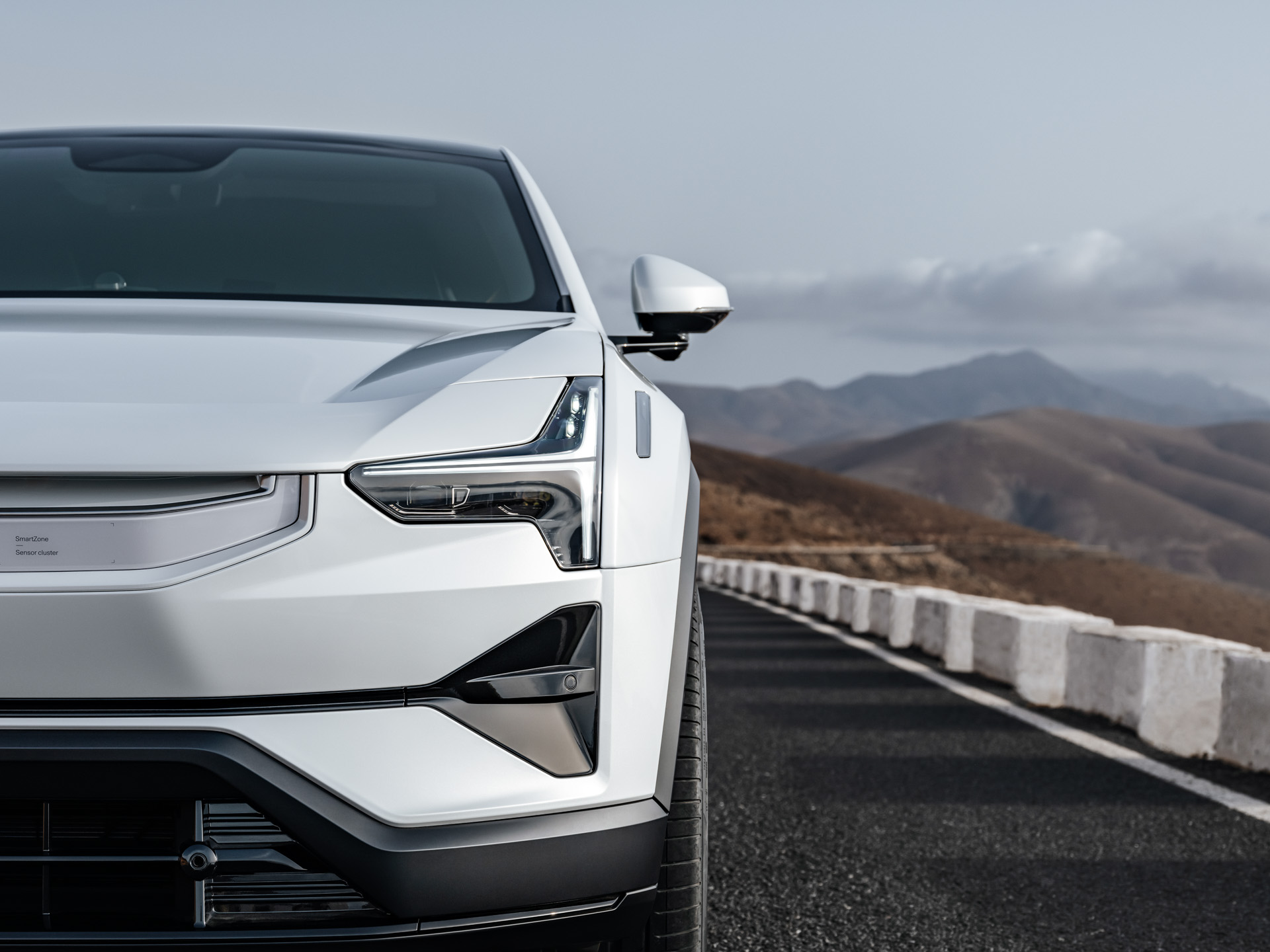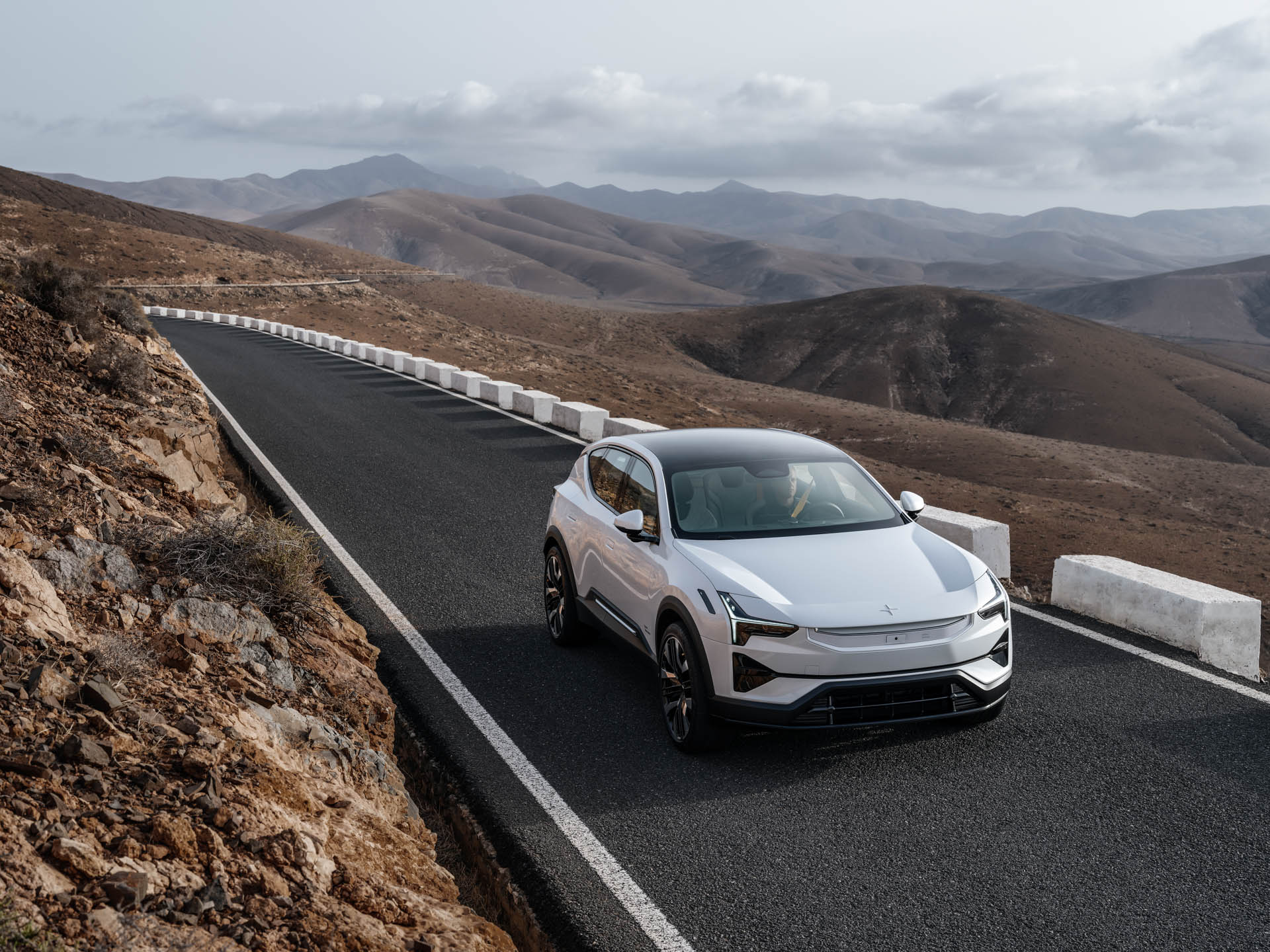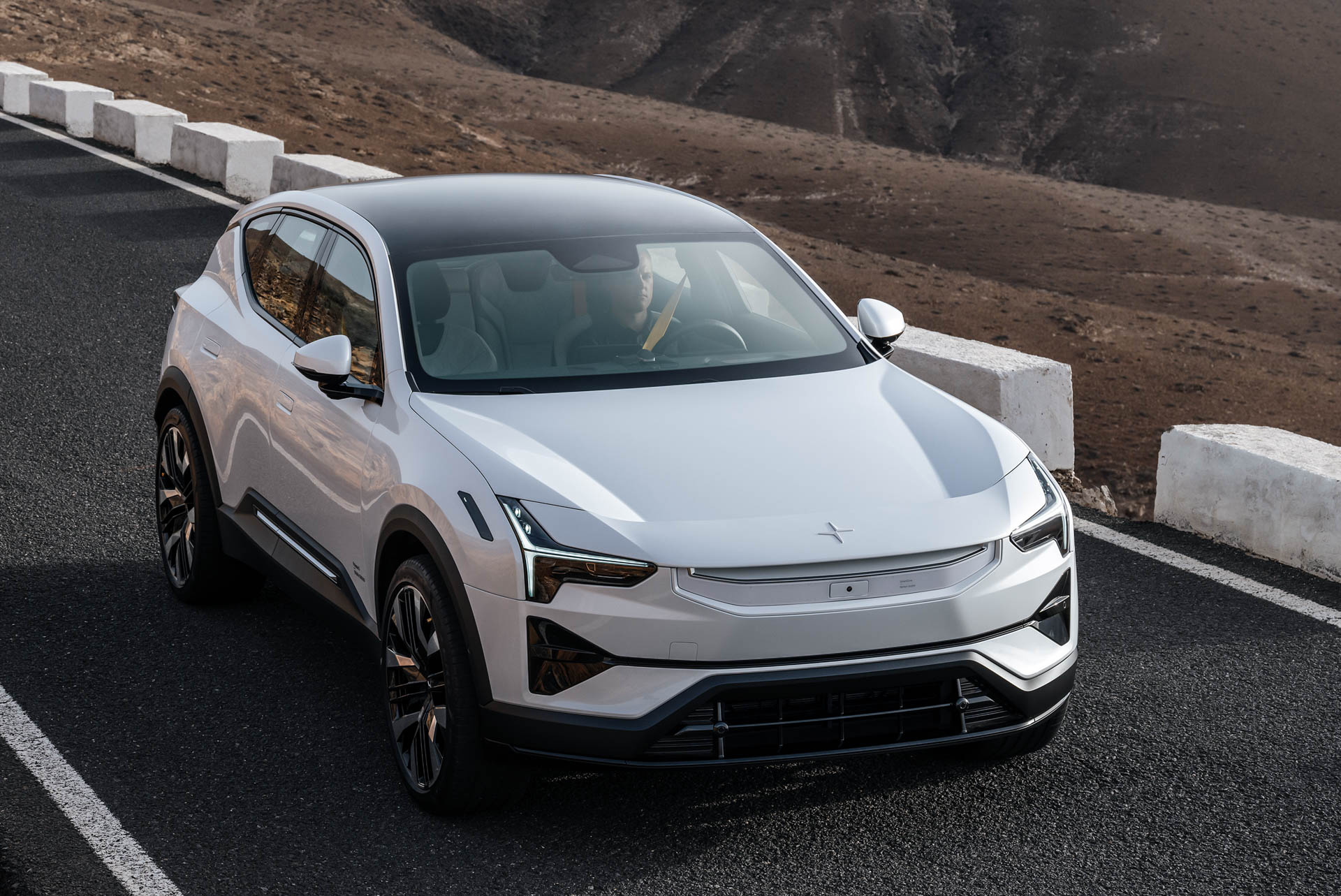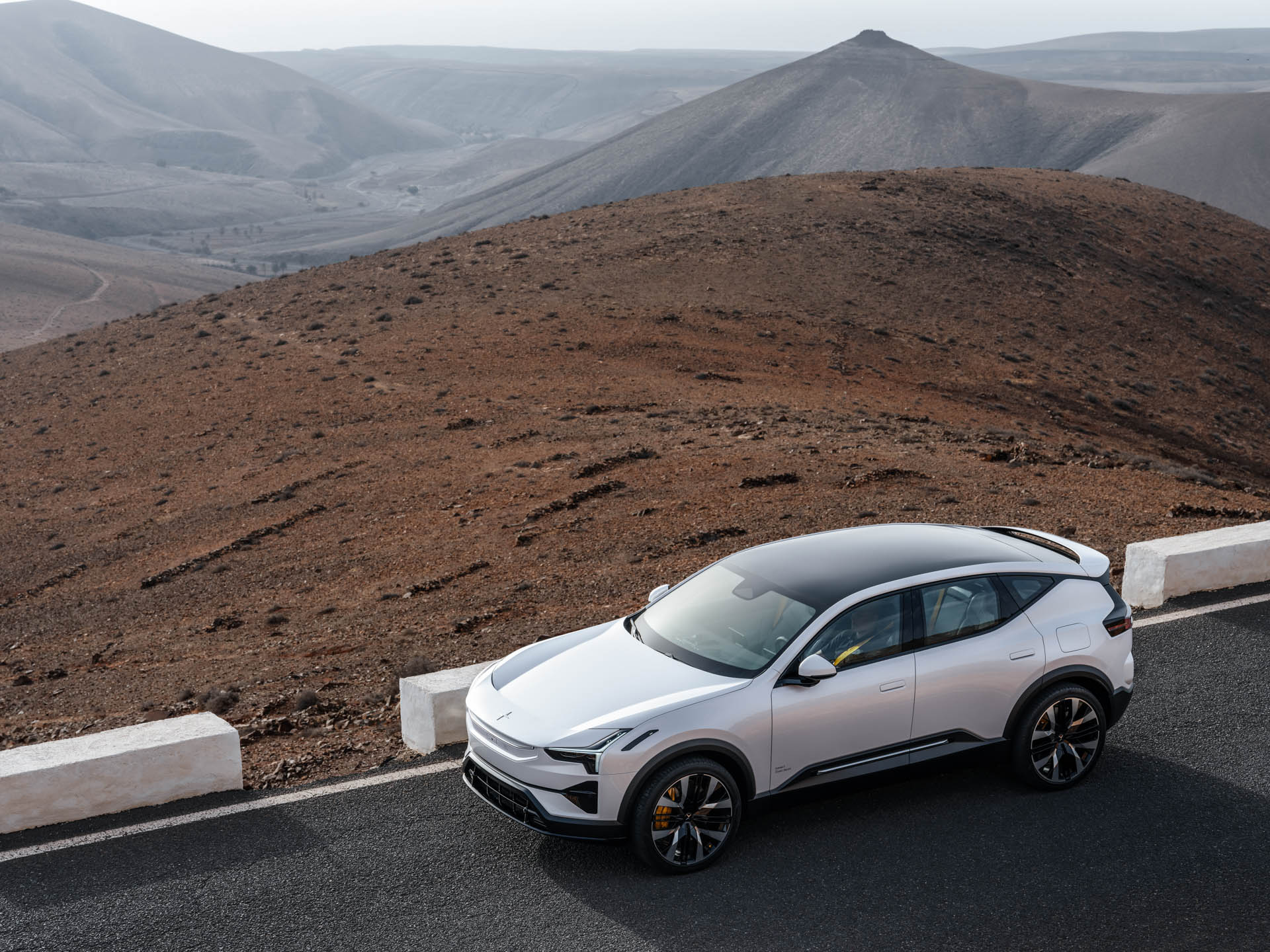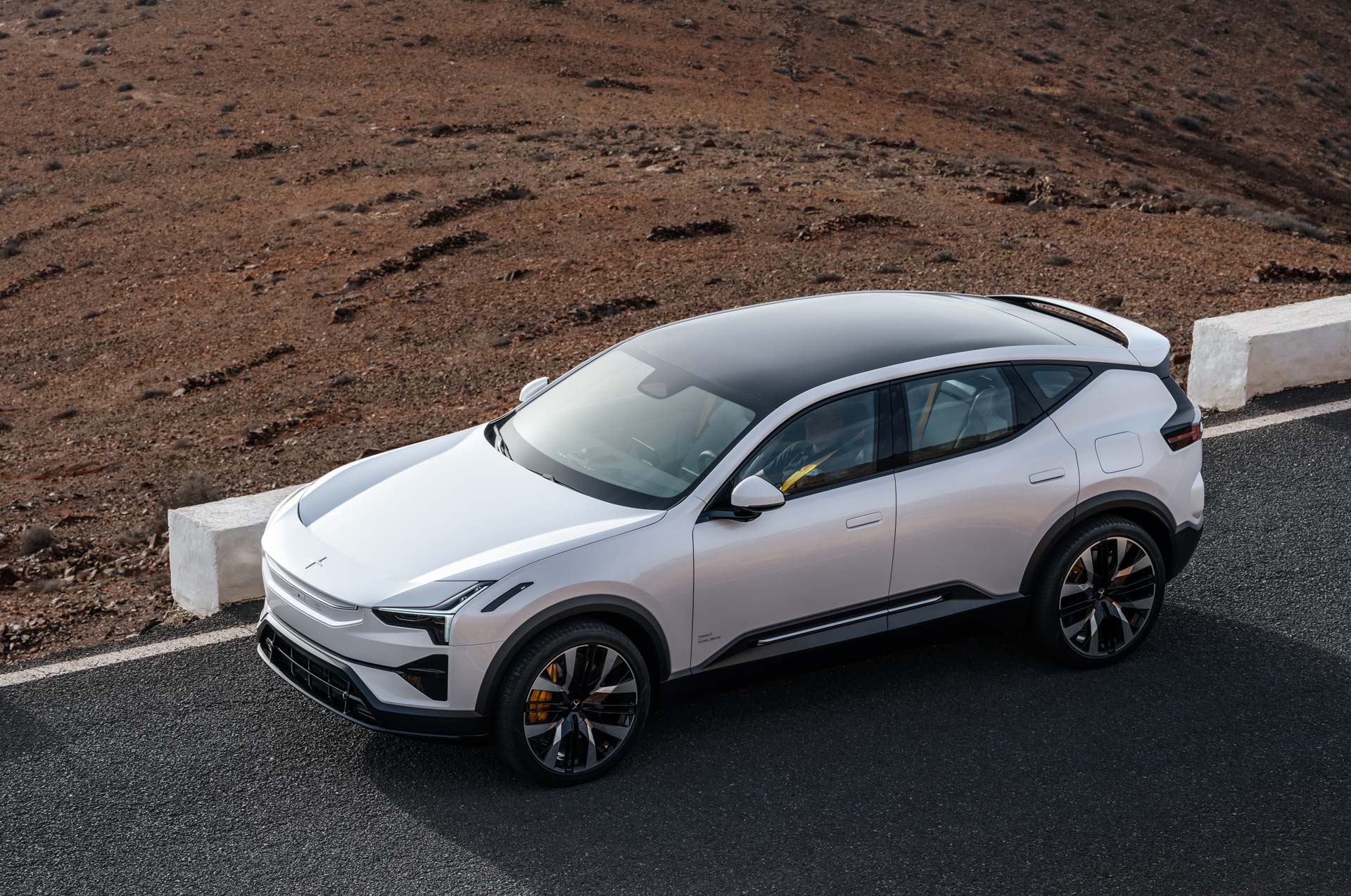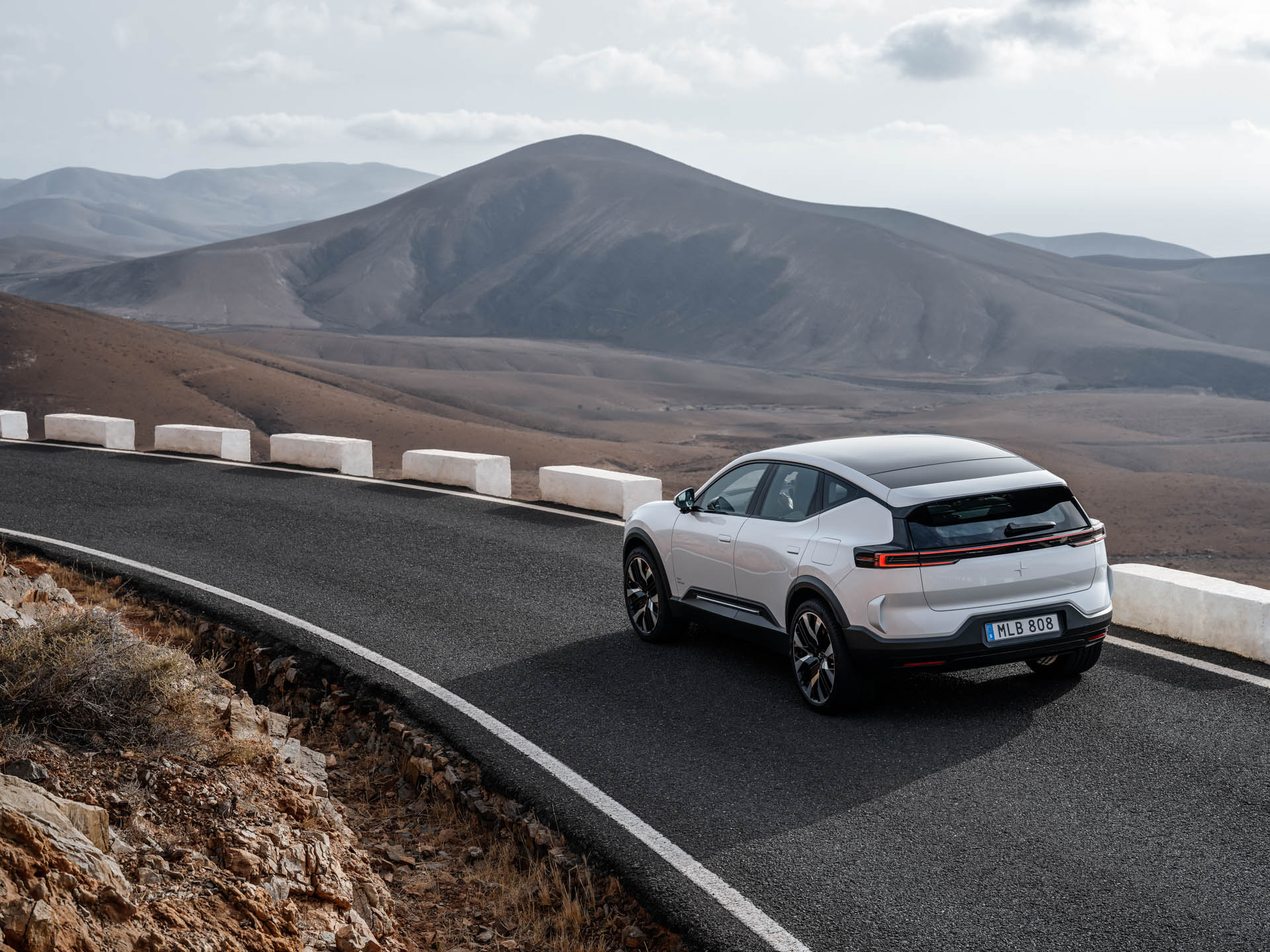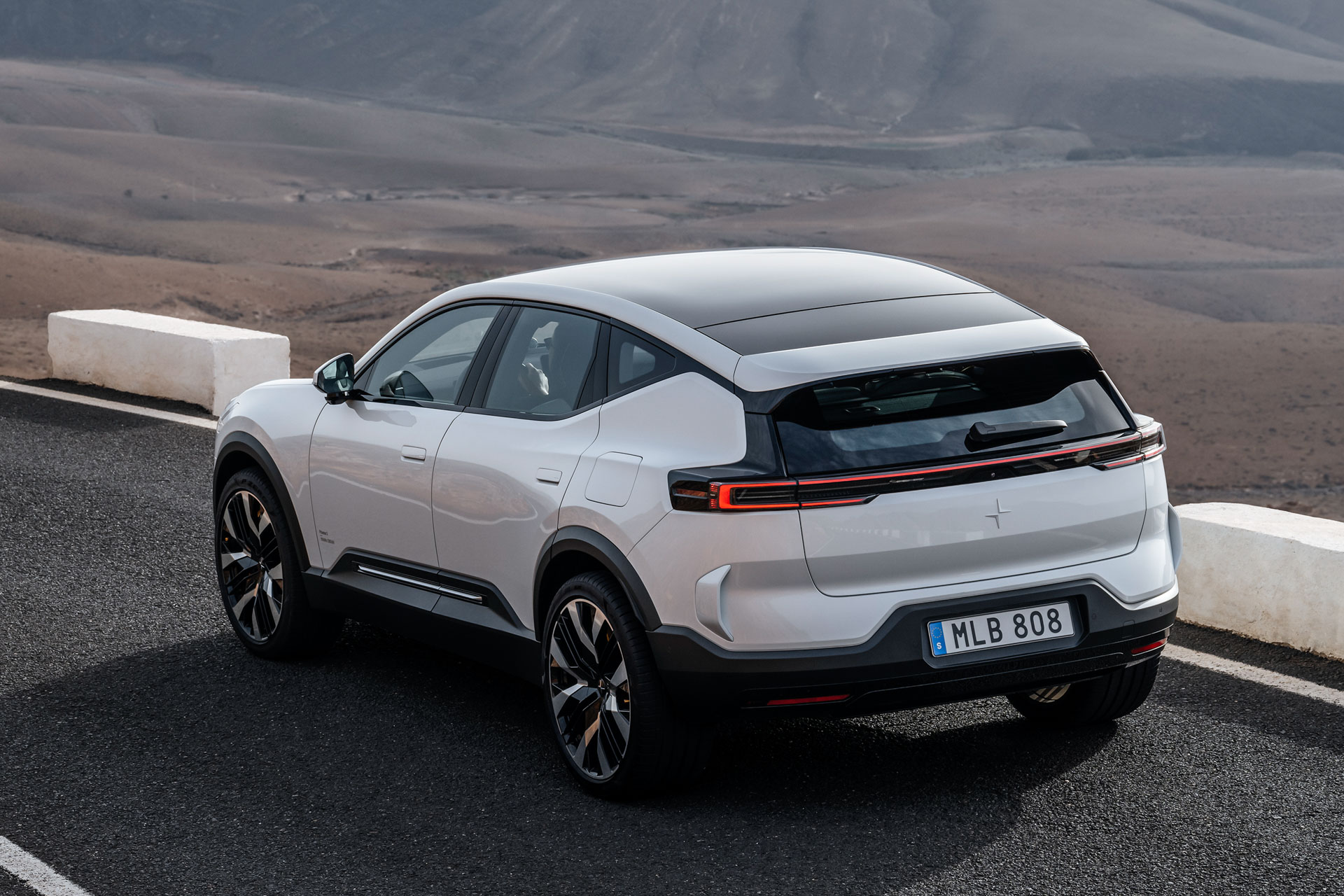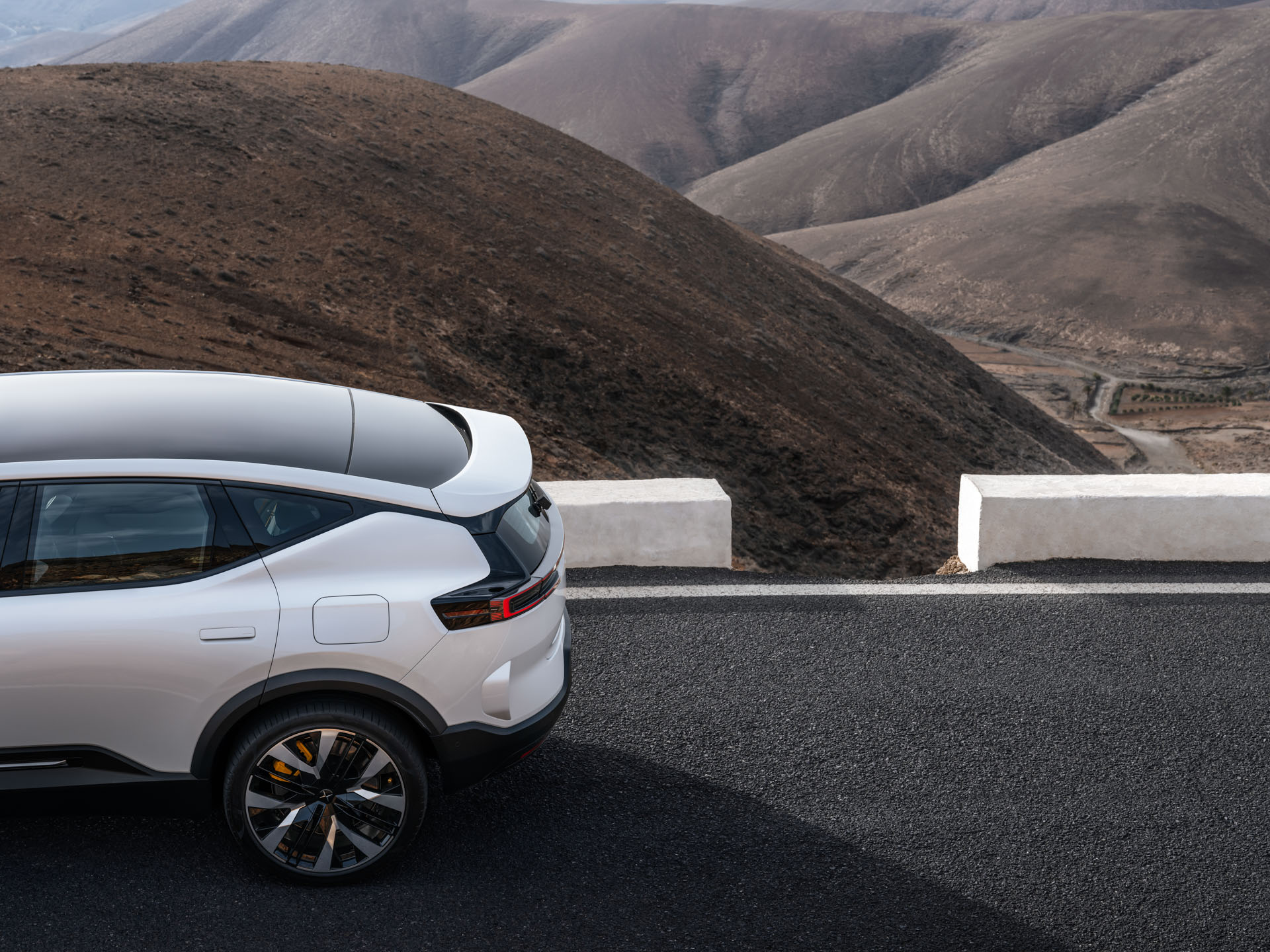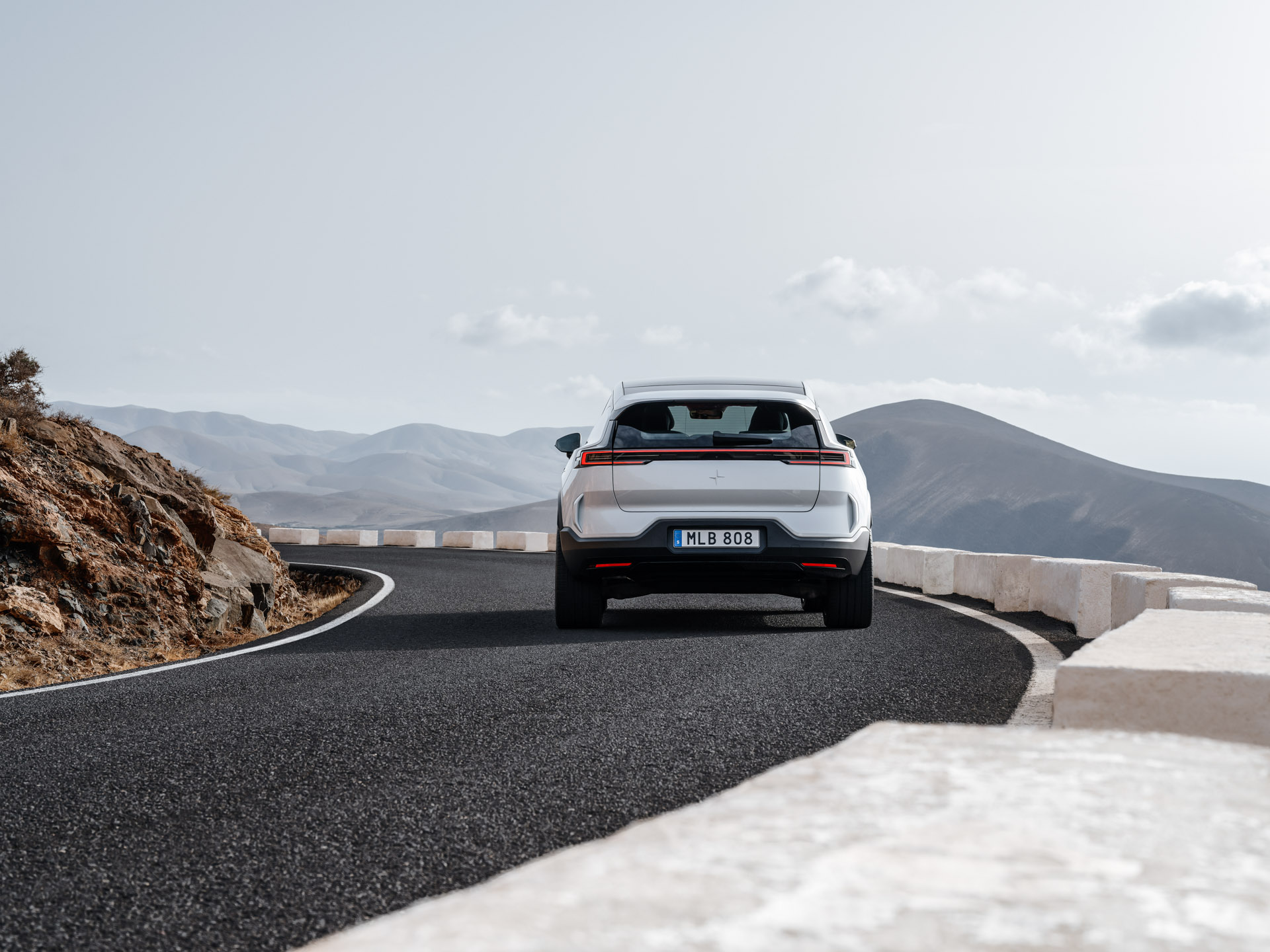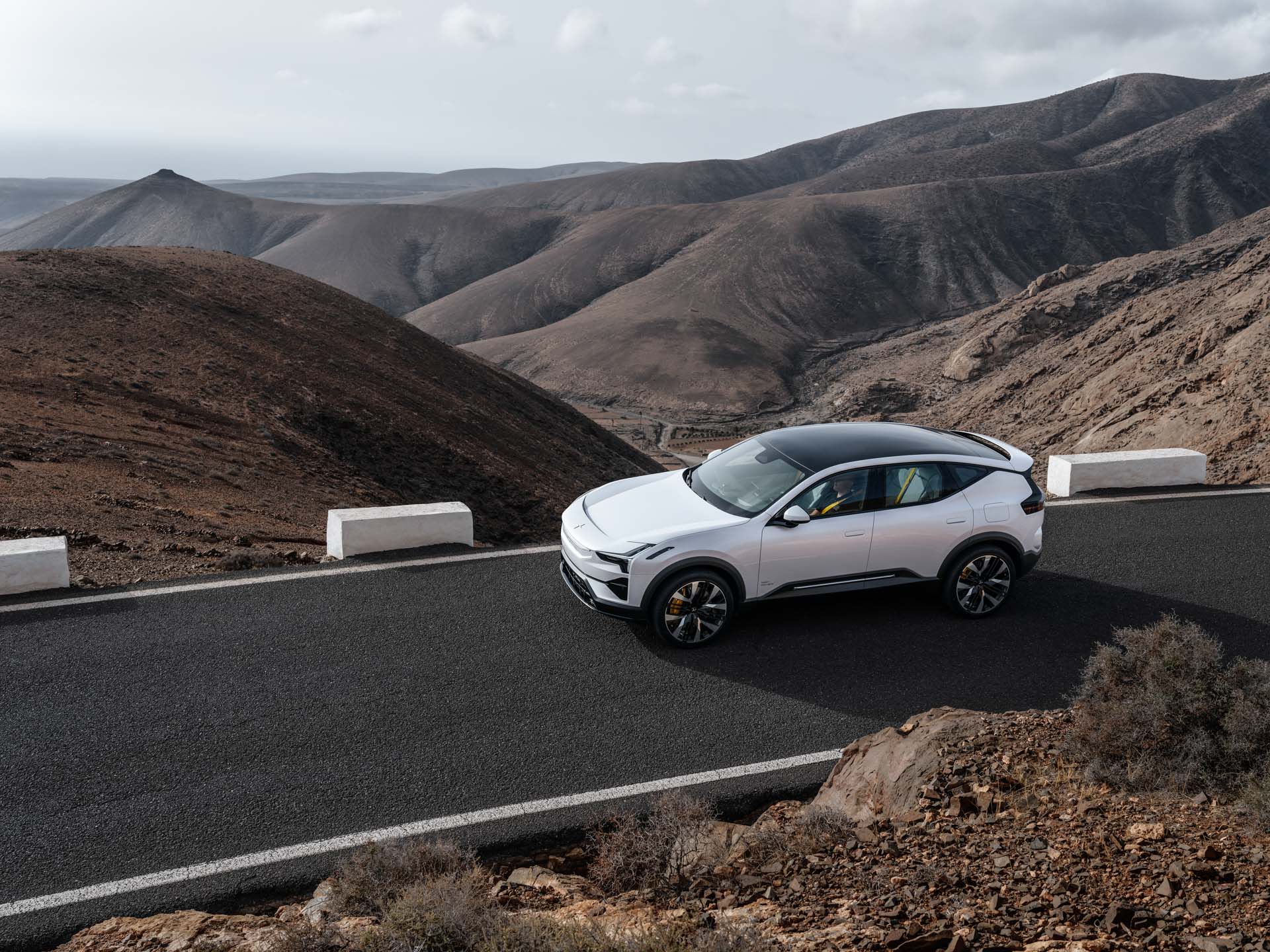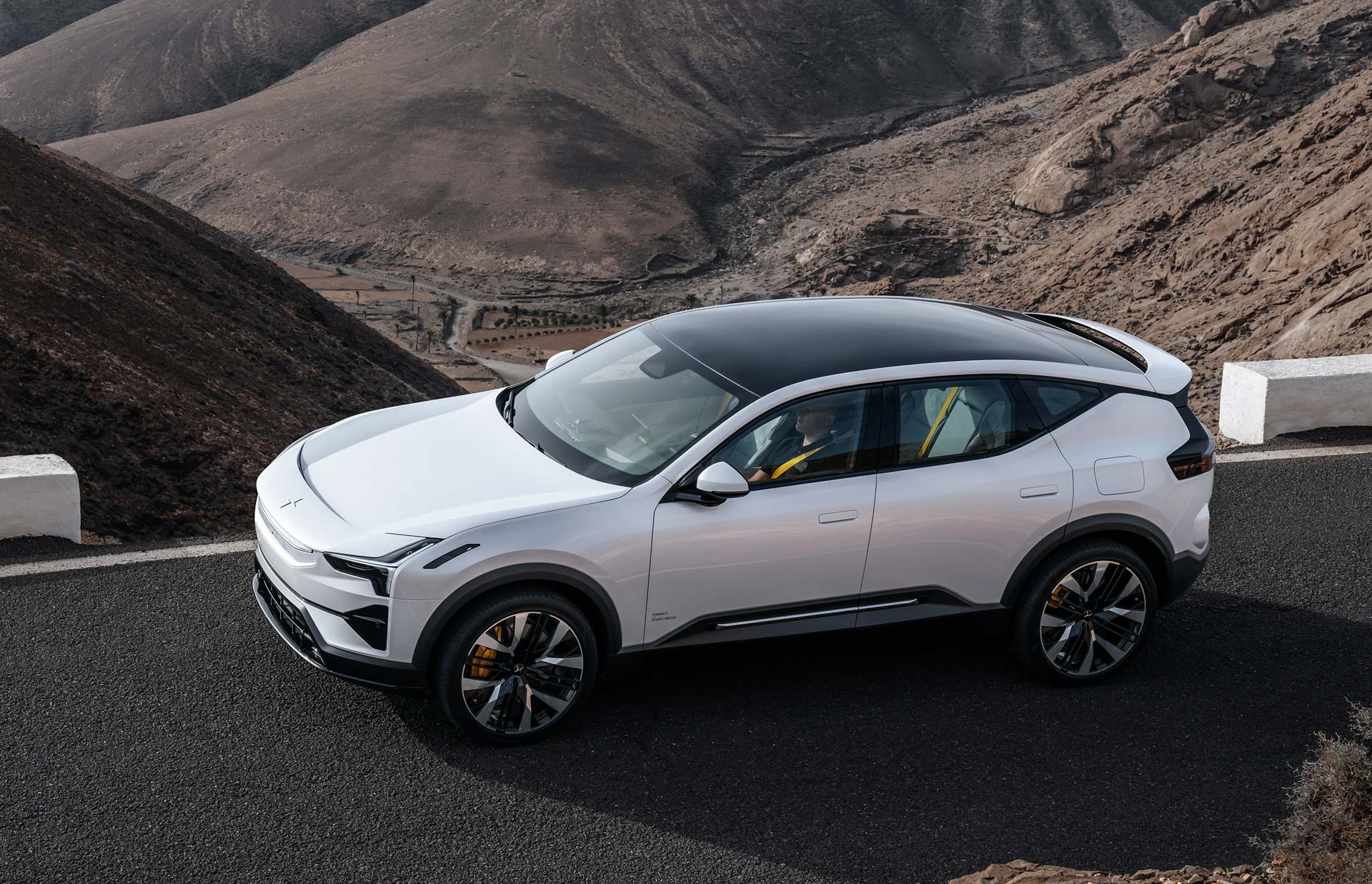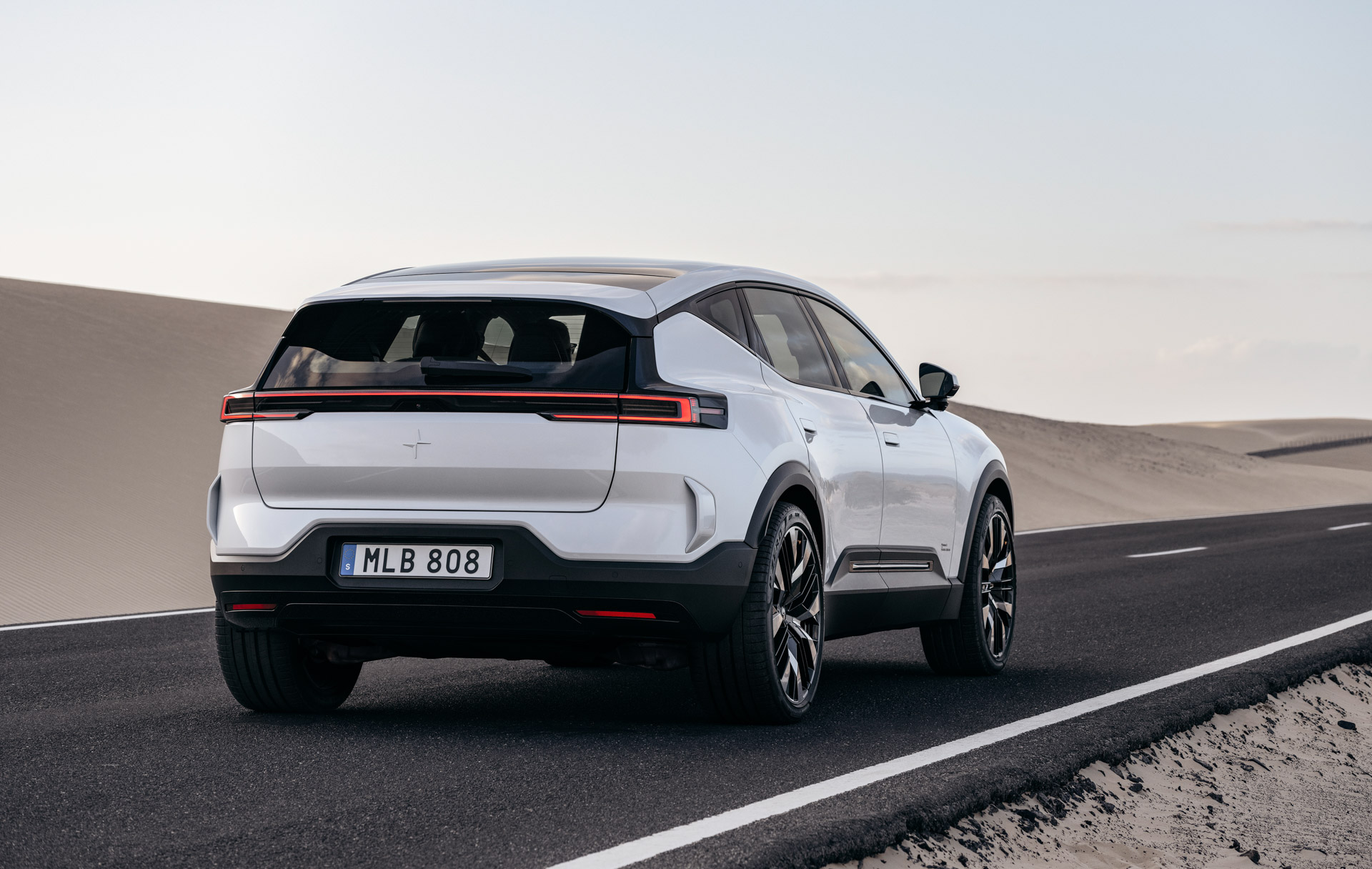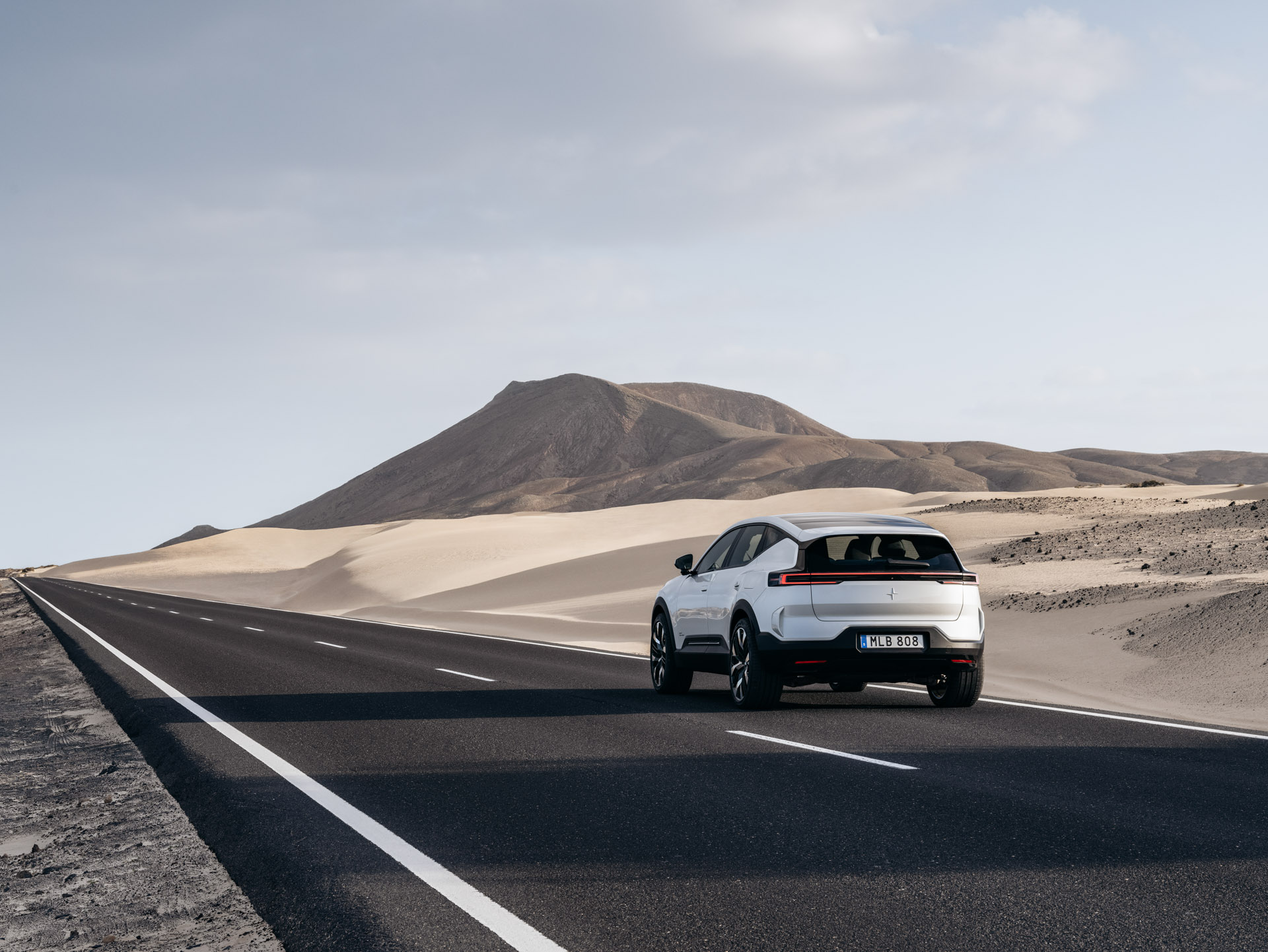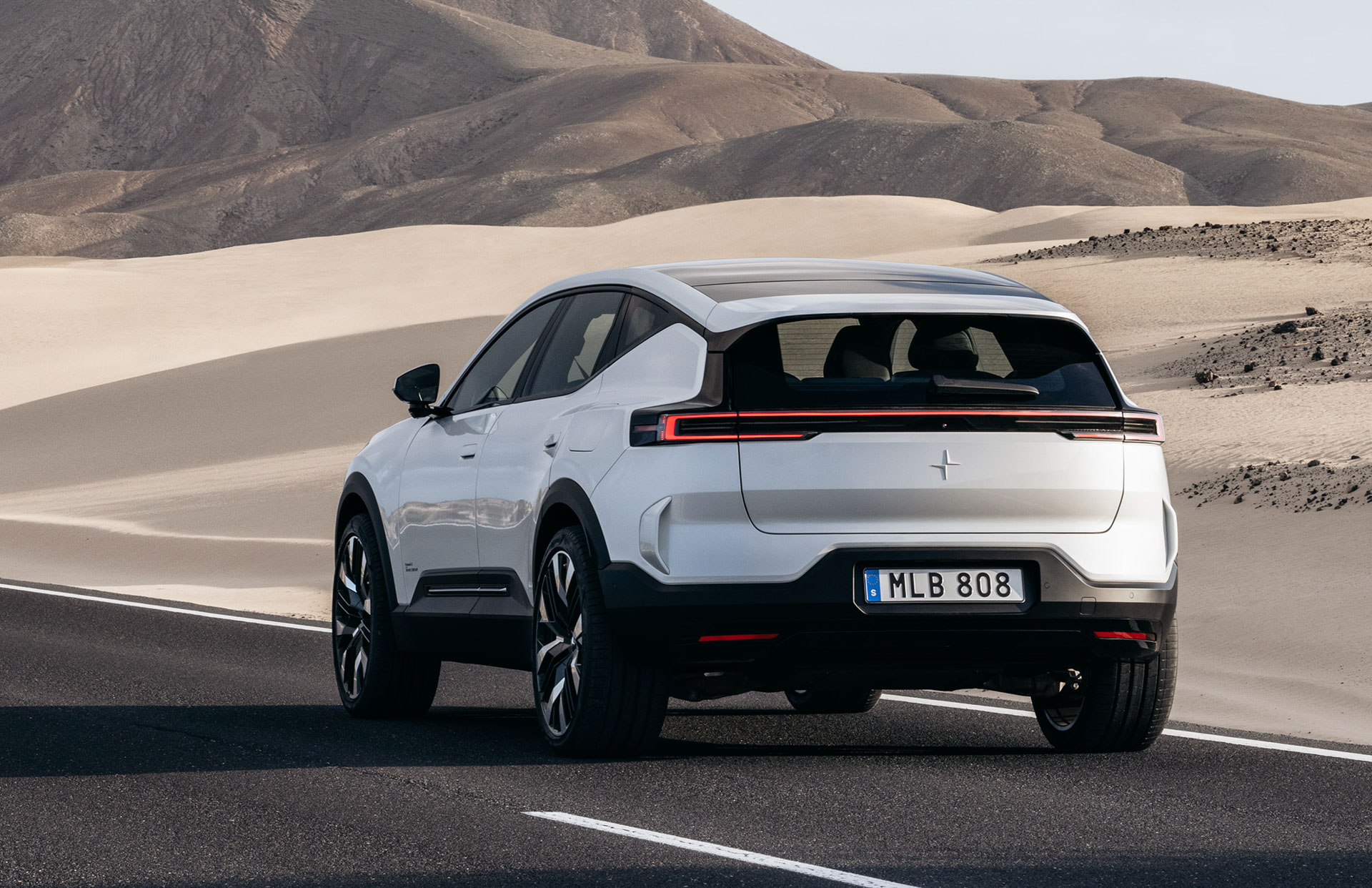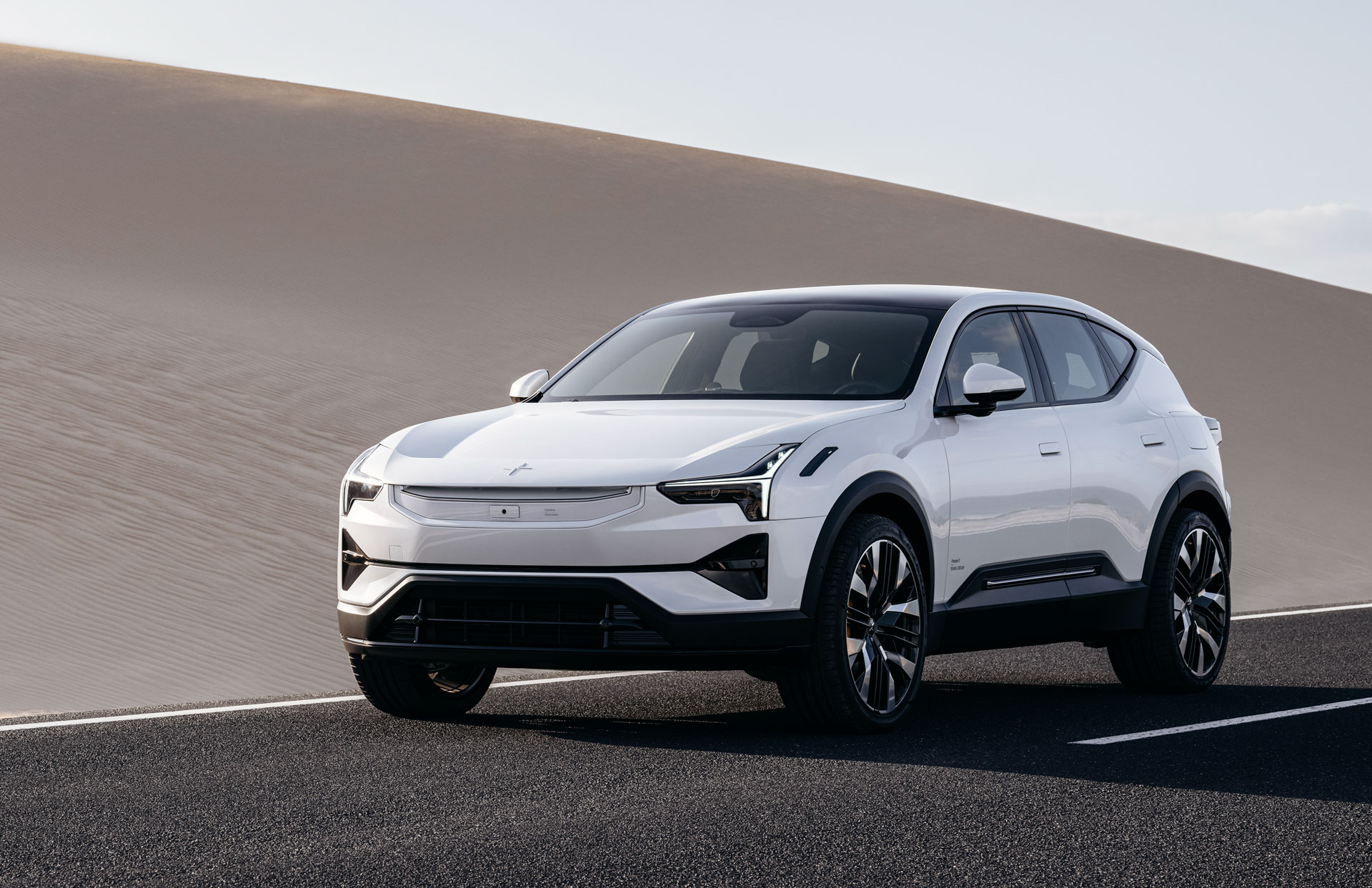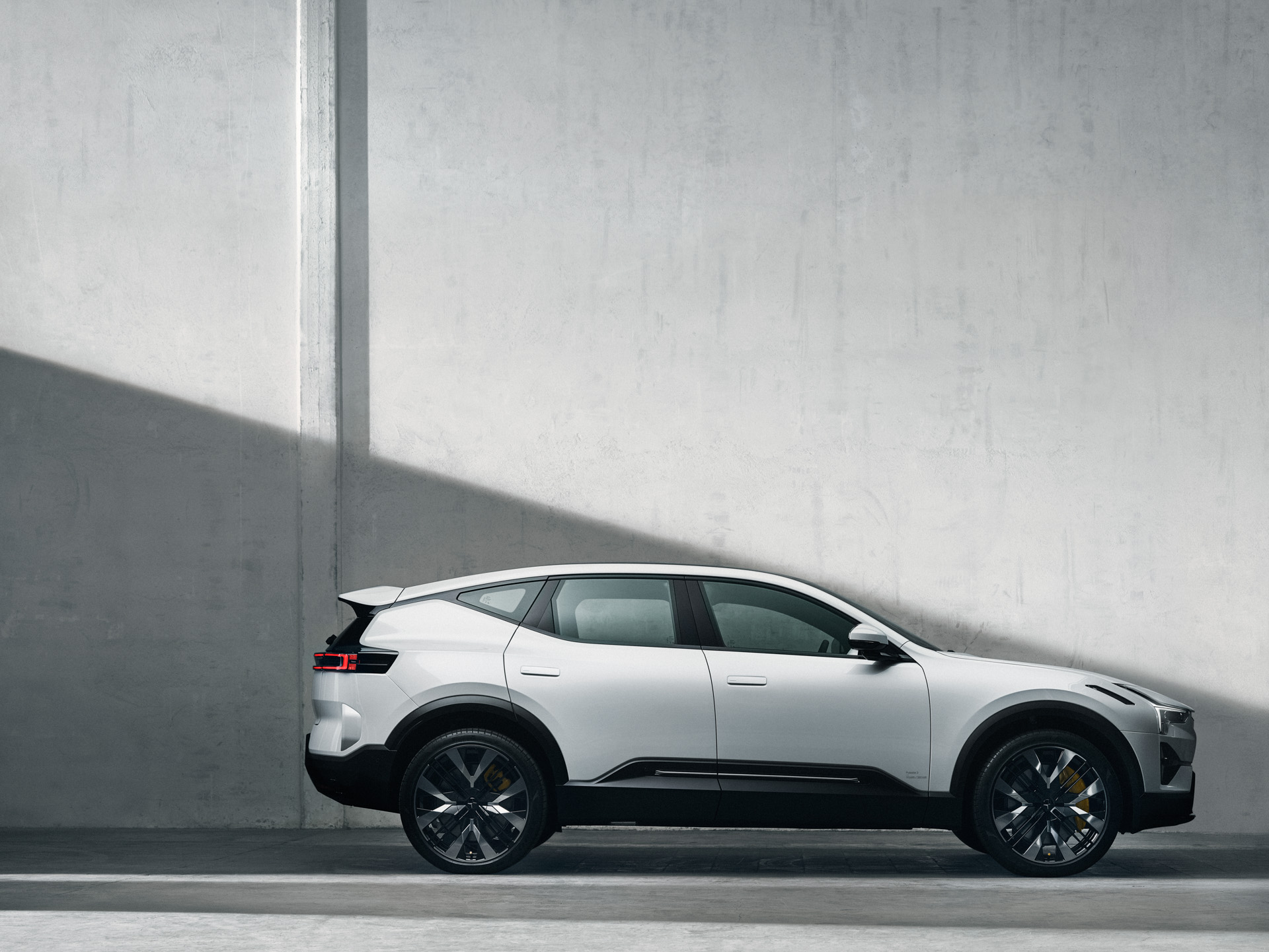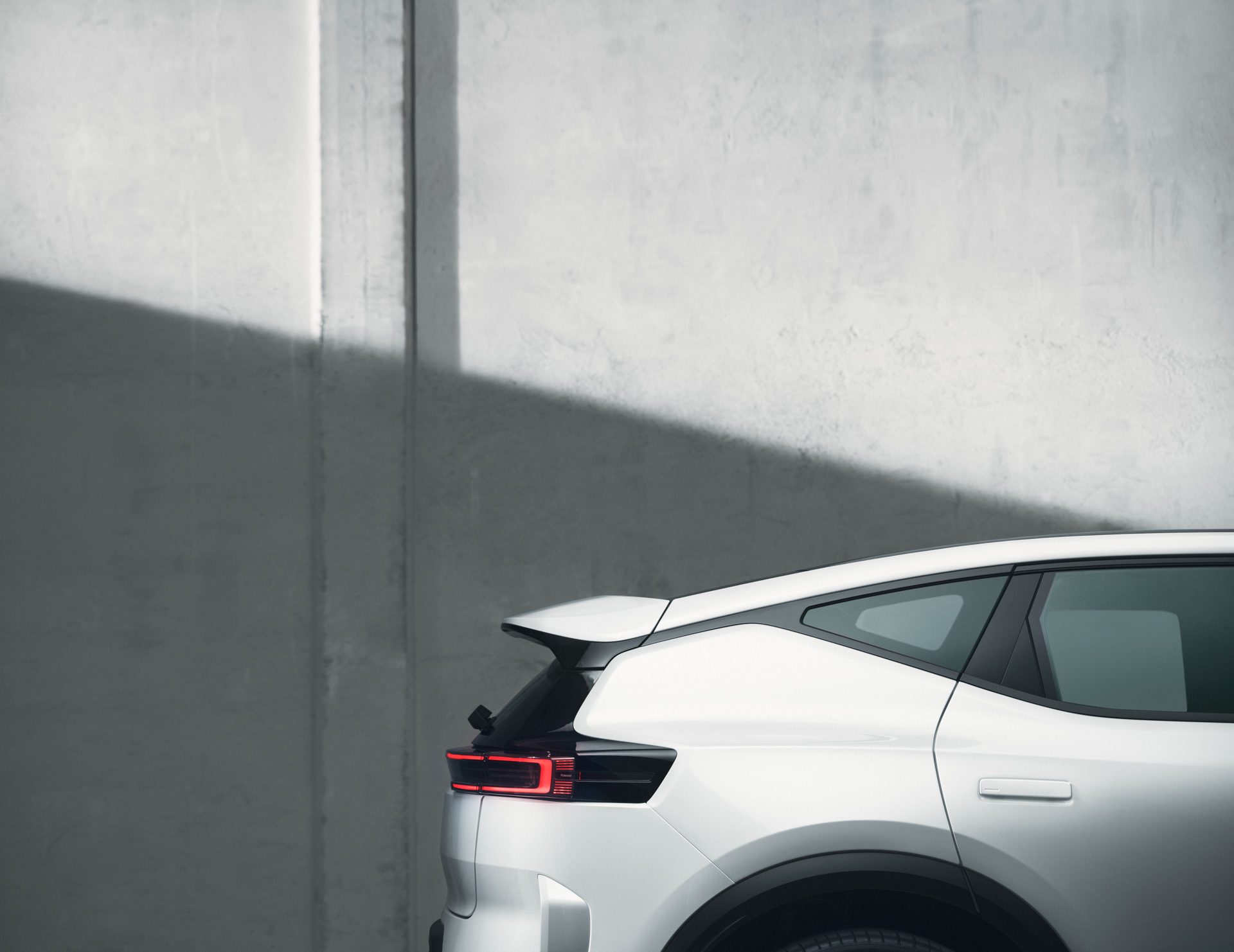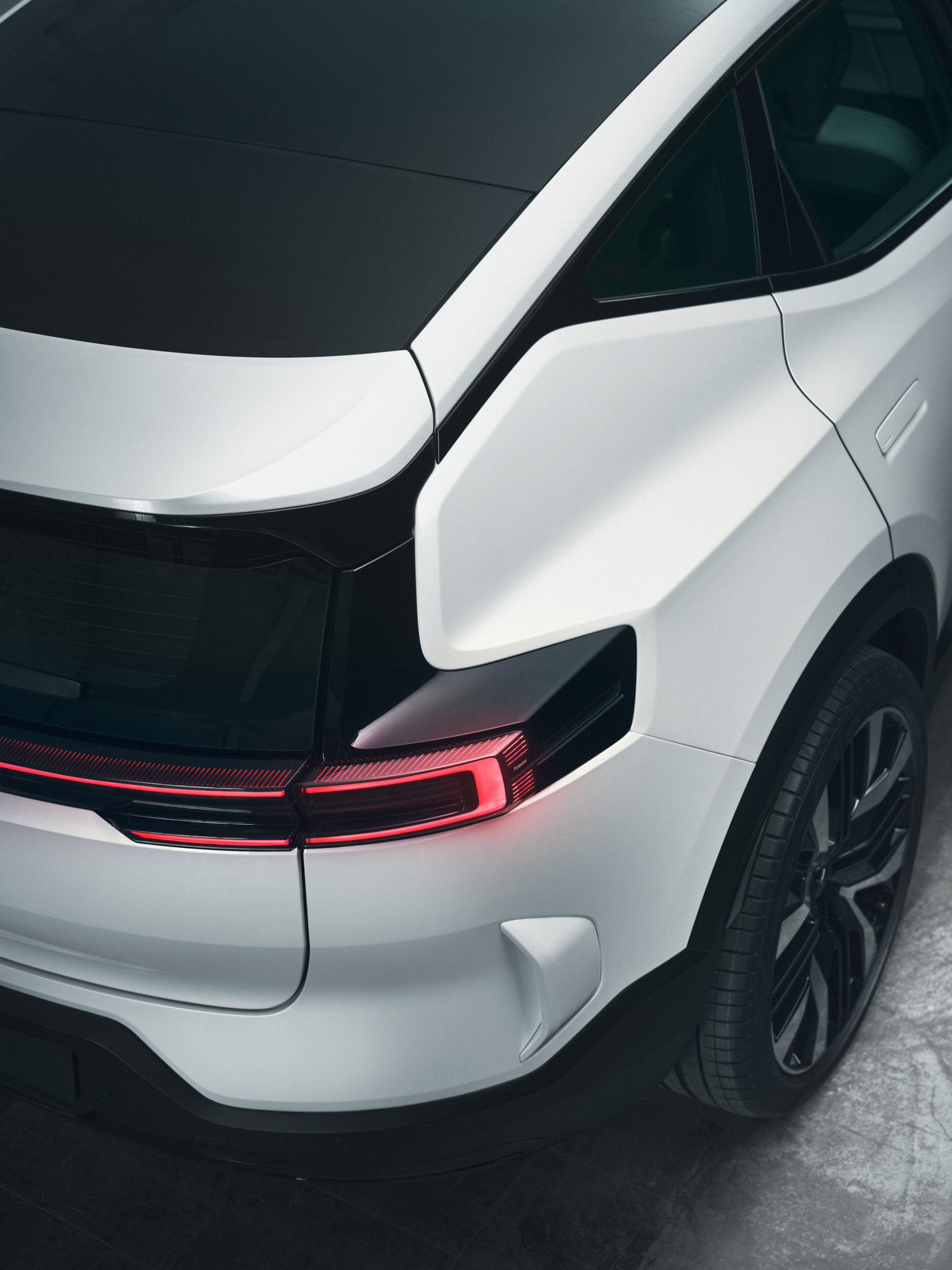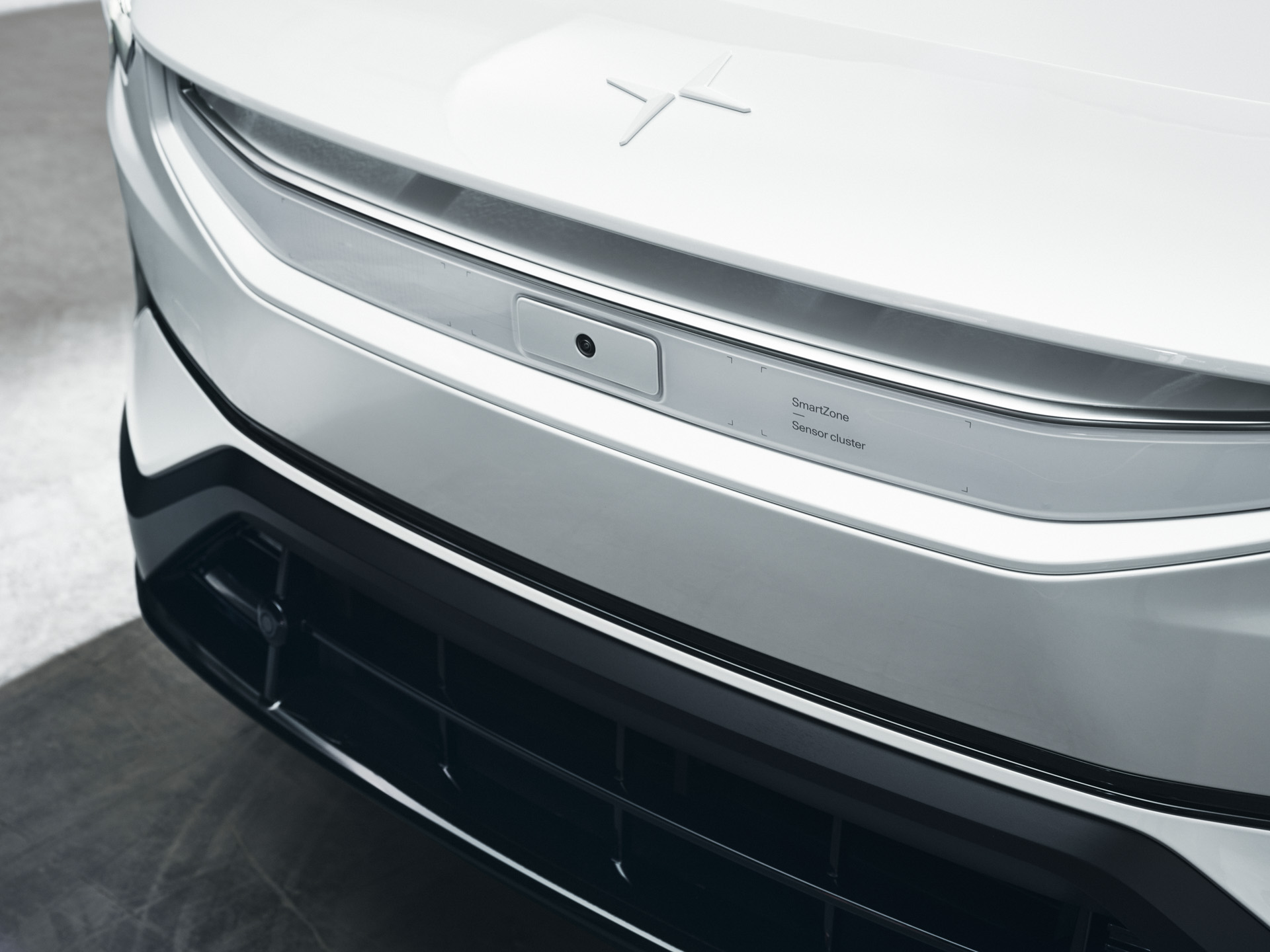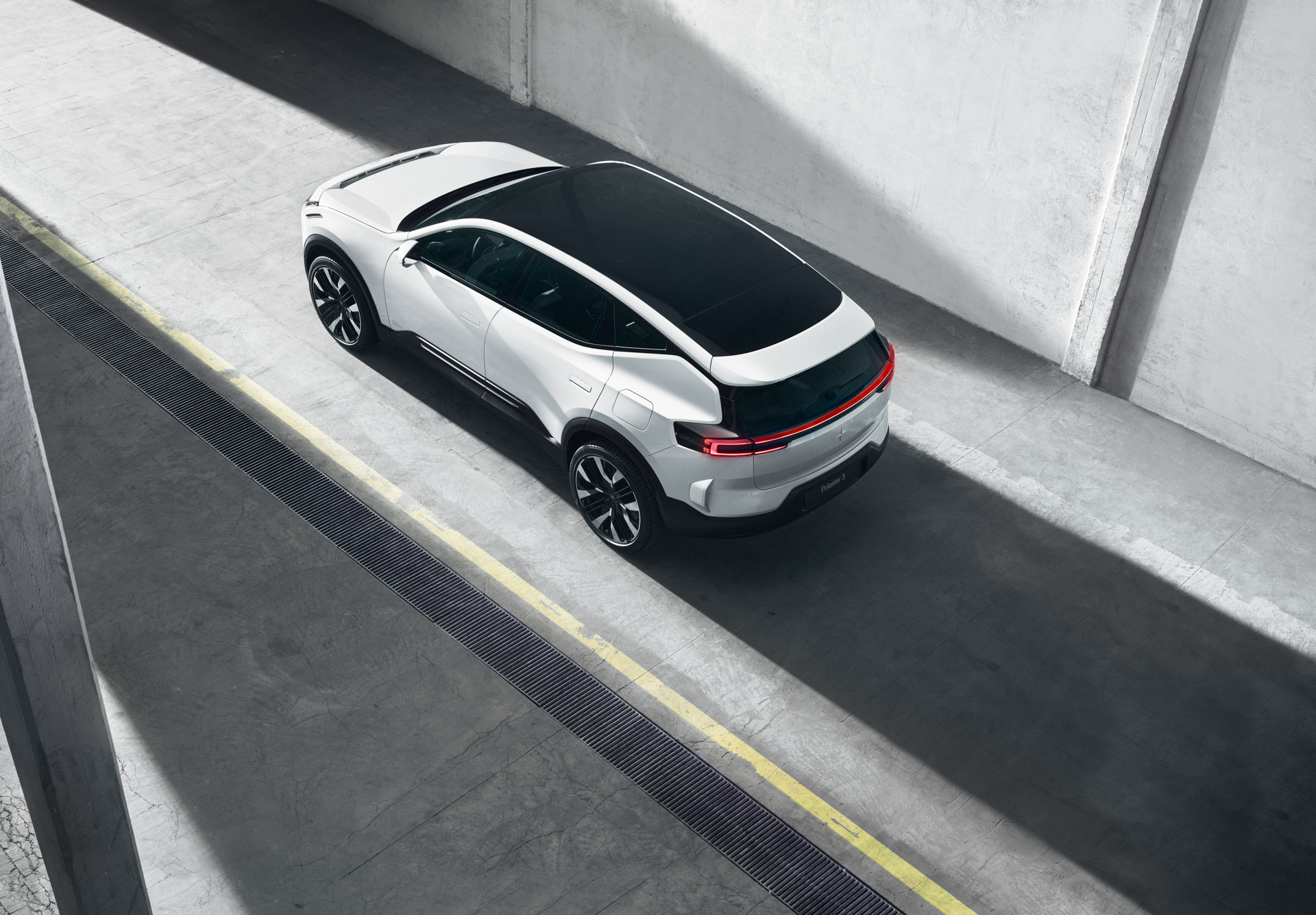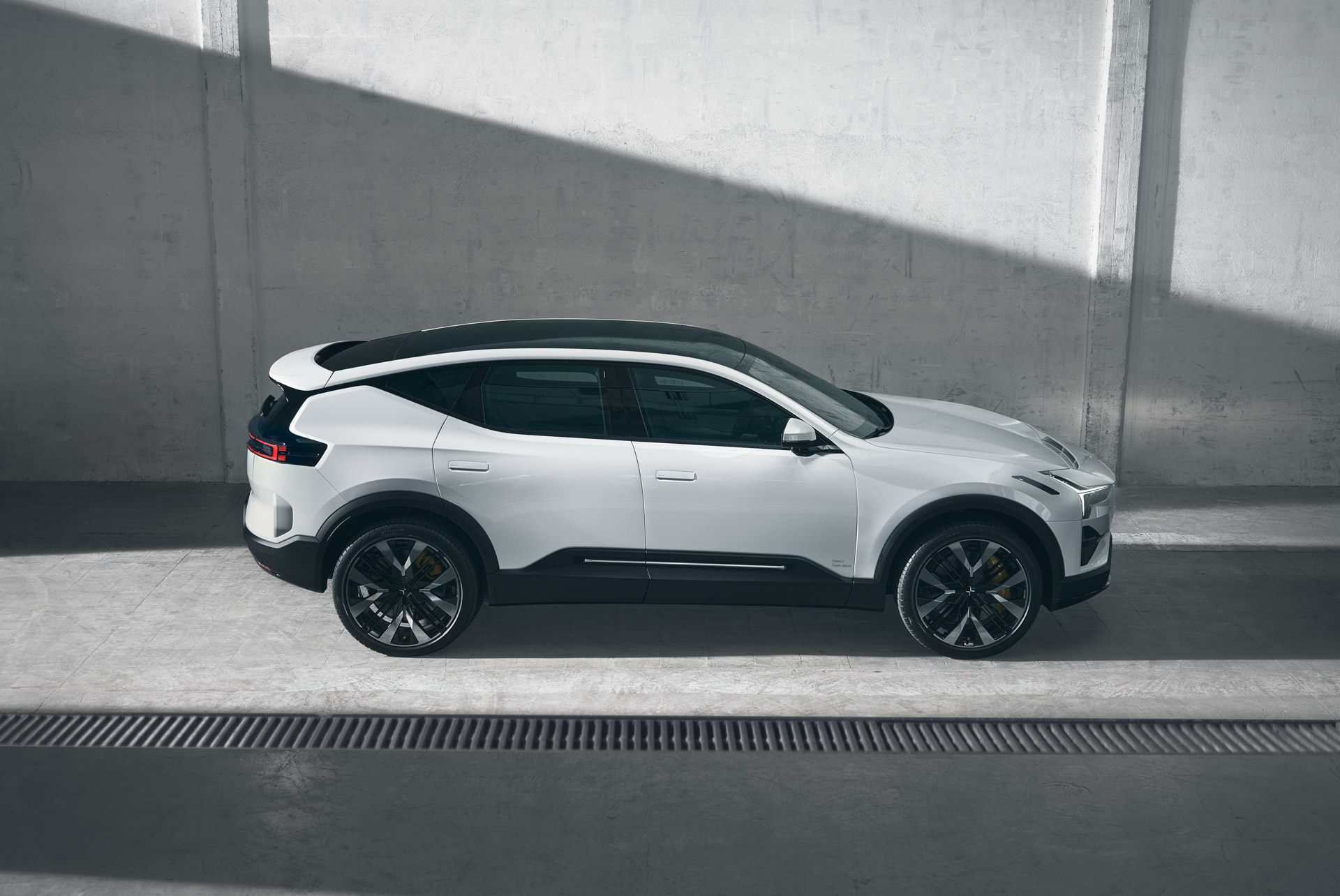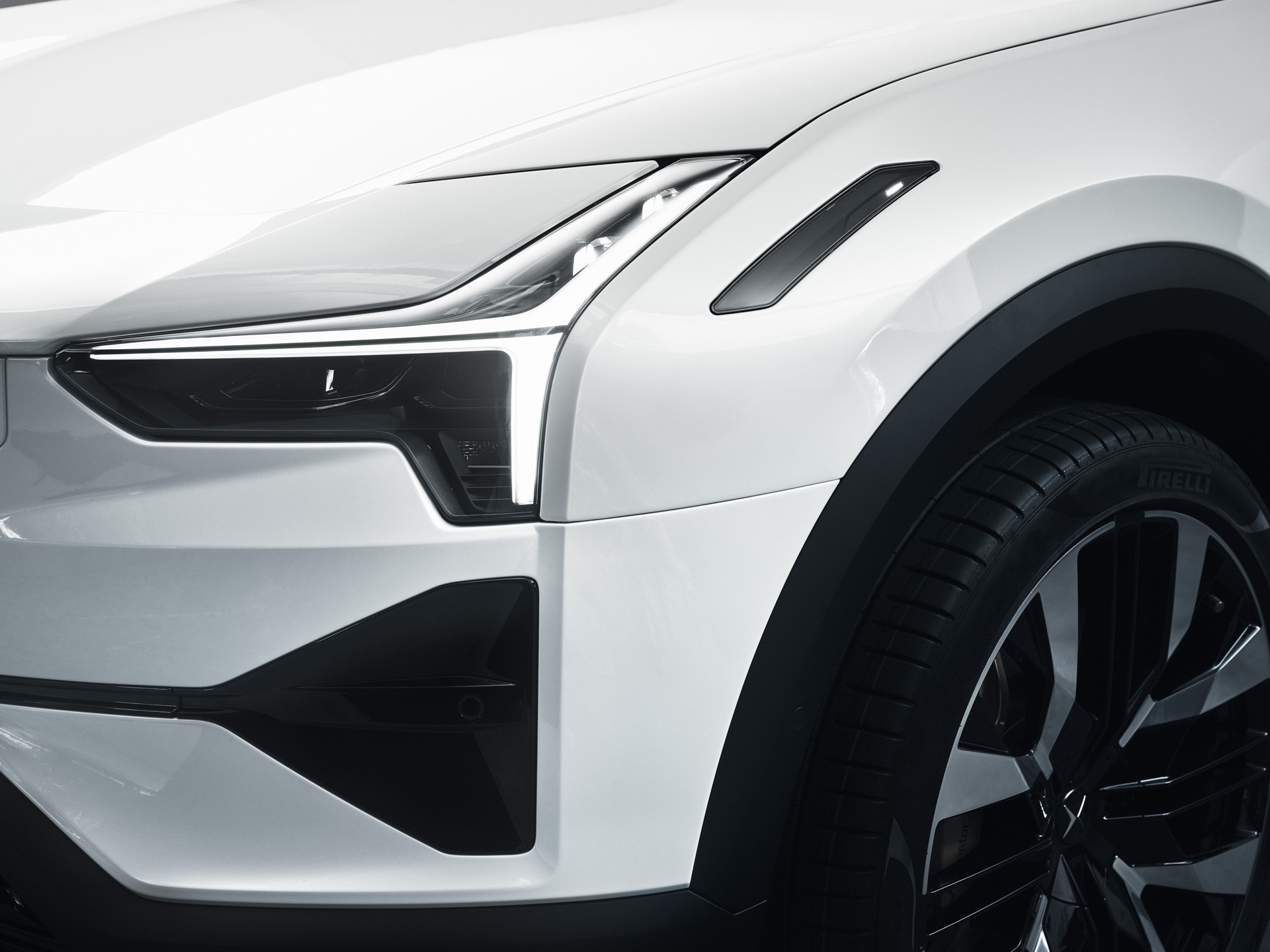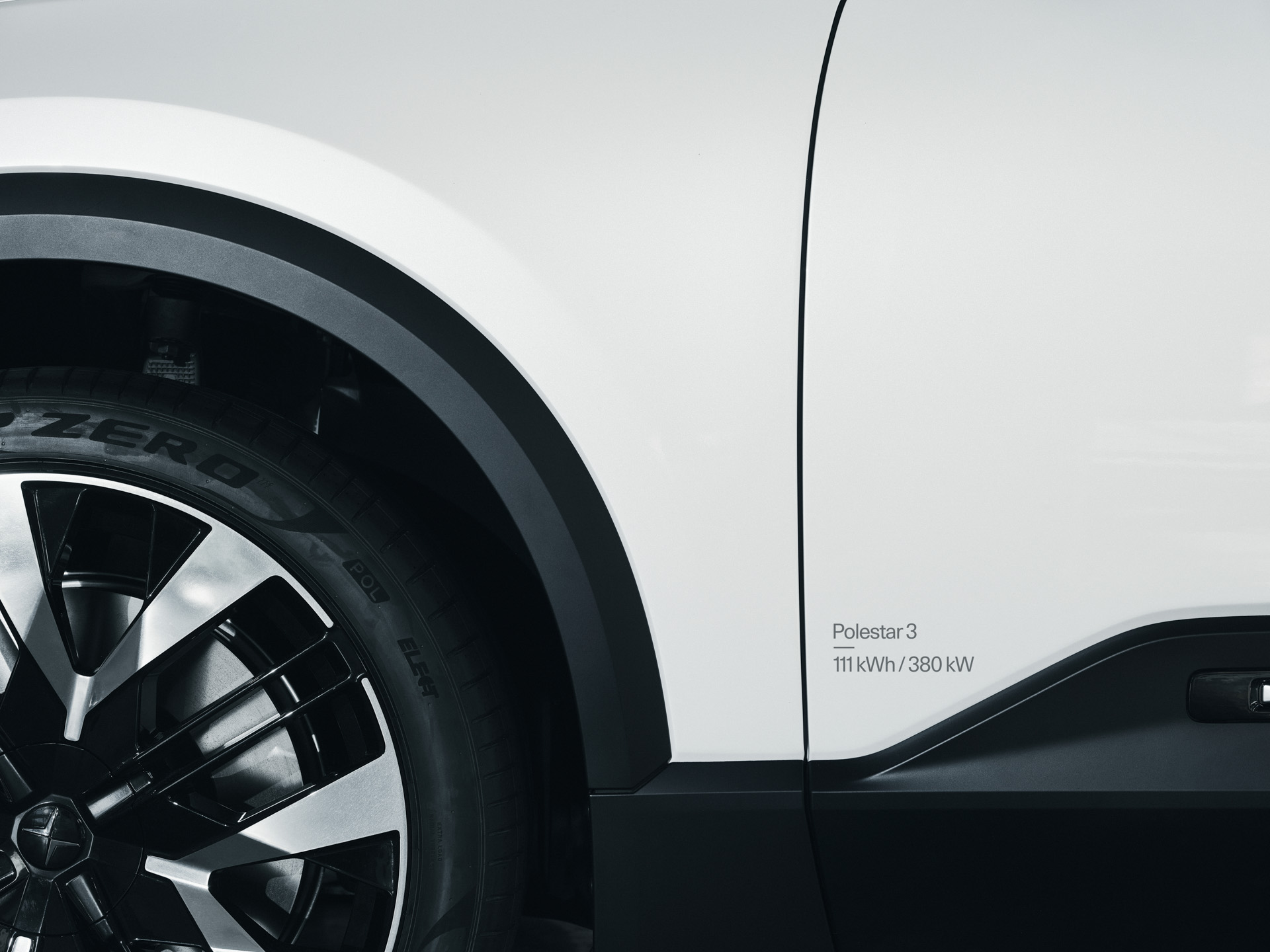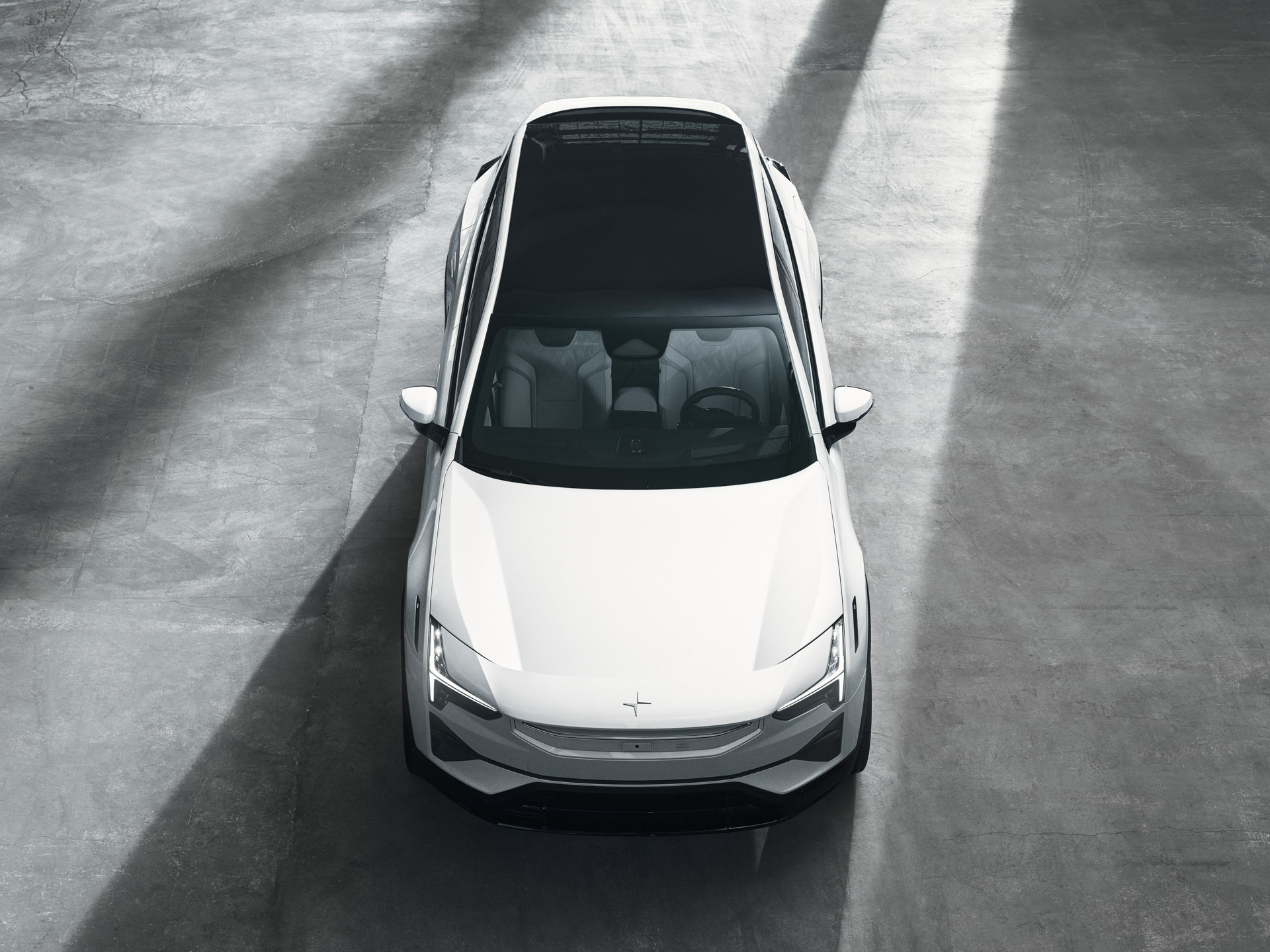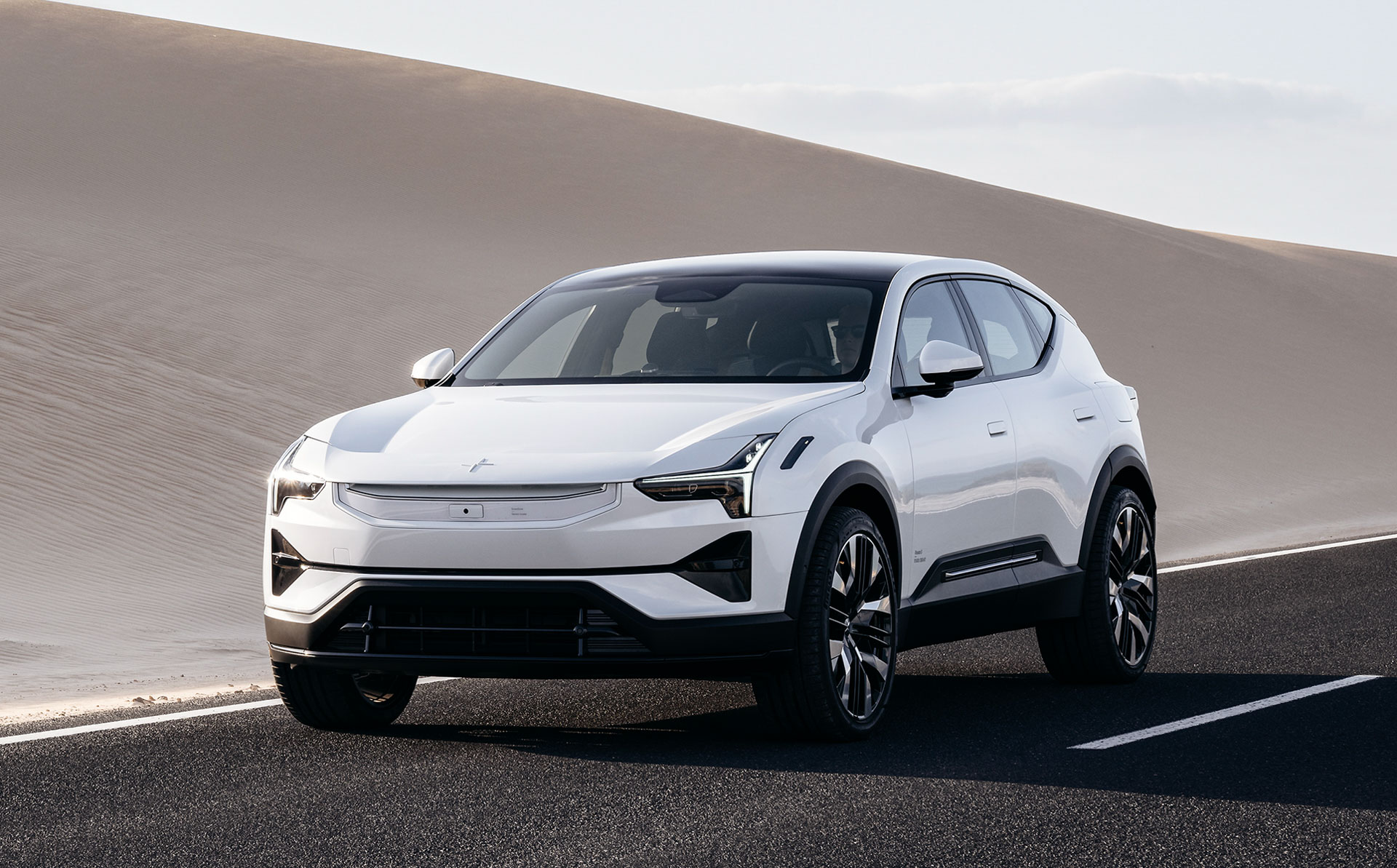This is the Polestar 3, an all-electric alternative to conventional luxury SUVs like the Porsche Cayenne. Official teasers and the release of some key pieces of info about Polestar’s flagship mean we already know a little of the spec, but this is our first chance to see it from every angle and to find out the exact tech details ahead of next year’s on-sale date.
The 3 is Polestar’s biggest car, sharing its platform with the next-generation Volvo XC90, and riding on a 117.5-in (2,985 mm) wheelbase. That makes it 3.5-in (90 mm) longer between axles than a Cayenne and 0.8-in (20 mm) longer than a Tesla Model X, but 4.0-in (101 mm) shorter than a Rivian R1S, which unlike the five-seat Polestar comes with a third row of chairs. It’s also Polestar’s priciest car yet: the entry level car costs £79,900 in the UK and $83,900 in America. That compares with £73,800 / $86,500 for a Porsche Cayenne E-Hybrid and $78,000 for a bottom-rung, dual-motor Rivian R1S.
The base Polestar 3 comes with rear-biased all-wheel drive courtesy of a dual-motor setup that sends 483 hp (489 PS) and 620 lb-ft (840 Nm) to the ground via a single gear ratio for a zero to 62 mph (100 km/h) time of 5 seconds. That figure only matches the time for the 456 hp (462 PS) Cayenne, but Polestar’s secret weapon is a £5,600 ($6,500 est) Power Pack that lifts output to 510 hp (517 PS) and 671 lb-ft (910 Nm) and cuts the sprint to 4.7 seconds.
Related: Polestar 3, 4, And 5 Teased As An Onslaught Of Models Is On The Horizon
But even that isn’t enough to see off the 600 hp (608 PS) R1S, which hits 60 mph (97 km/h) in 4.0 seconds in dual-motor guise, and a crazy 3.0 seconds when you fork out an additional $8k for the 835 hp (847 PS) quad-motor setup. The base R1S, however, comes with meagre 260-mile (418 km) range unless you shell out $6,000 for the bigger battery, which bumps that number to 320 EPA miles (515 km). That last figure should broadly tally with the EPA conversion of the 379 miles (610 km) WLTP range Polestar quotes for the standard 111 kWh battery, the only power pack available.
250 kW charging, heat pump standard
The Polestar’s battery can be charged at up to 250 kW, which isn’t as fast as some recent electric cars (including Porsche’s Taycan EV, which can juice-up at 360 kW), but it’s still pretty rapid. Polestar says the lithium ion pack is housed in a protective aluminium case with boron steel reinforcement and liquid cooling, and features a standard heat pump that can be used for climate functions and battery pre-conditioning. It’s also set up for vehicle-to-grid charging.
An adjustable one-pedal driving mode is standard, as is torque vectoring on the rear axle, whose motor can be deactivated in certain circumstances to save energy. Dual-chamber air suspension is also part of the basic package, the movement of the 21-in stock wheels being controlled by adaptive dampers. Go for the optional Performance Pack and in addition to the extra 27 hp (28 PS) you get a different tune for the air springs and 22-in forged alloy rims.
Sleek styling, low roofline
Visually, the 3 borrows heavily from Polestar’s Precept concept particularly at the front, whose defining feature is a horizontal spoiler mounted above the shallow grille and connecting the two LED headlamp units. And though the overall family look has had to be adapted to suit the taller body, this is definitely a sleek, sporty SUV, and not a utilitarian box like the R1S: the roofline stands only 63.5-in (1,614 mm) from the ground, compared with 66.8-in (1,696 mm) for a Cayenne Hybrid.
The interior is decked out in sustainable materials like traceable wool and is the first Polestar model with an NVIDIA DRIVE core computer to power its driver assistance systems. The 3 also features Snapdragon computing behind its Google co-developed 14.5-in center display. Standard equipment includes a panoramic roof and retractable door handles, but all first-year cars also get the Plus Pack and Pilot Pack as standard, bringing a 25-speaker Bowers & Wilkins audio system, soft-closing doors, head-up display and Pilot Assist semi-autonomous driving.
LiDAR optional from mid-2023
Come next spring a Pilot Pack with LiDAR will join the options list, its additional NVIDIA control unit, three cameras and four ultrasonic sensors providing a more complete and accurate scan of the car’s environment, making it ready for more advanced autonomous driving. But even the launch model has five radar modules, five external cameras and twelve external ultrasonic sensors. One innovative function is an interior radar sensor that can detect tiny movements in the interior of the car and help protect against accidentally leaving children or pets inside.
The first batch of Polestar 3s will be built in Volvo’s Chengdu, China, facility, and should arrive with North American, European and Chinese customers in late 2023. But by the middle of 2024 3s will also be rolling out of Volvo’s Ridgeville, South Carolina, factory.
Would you take the Polestar 3 over a conventional combustion or hybrid SUV like the Porsche Cayenne, or the all-electric Rivian R1S? Leave a comment and let us know.




